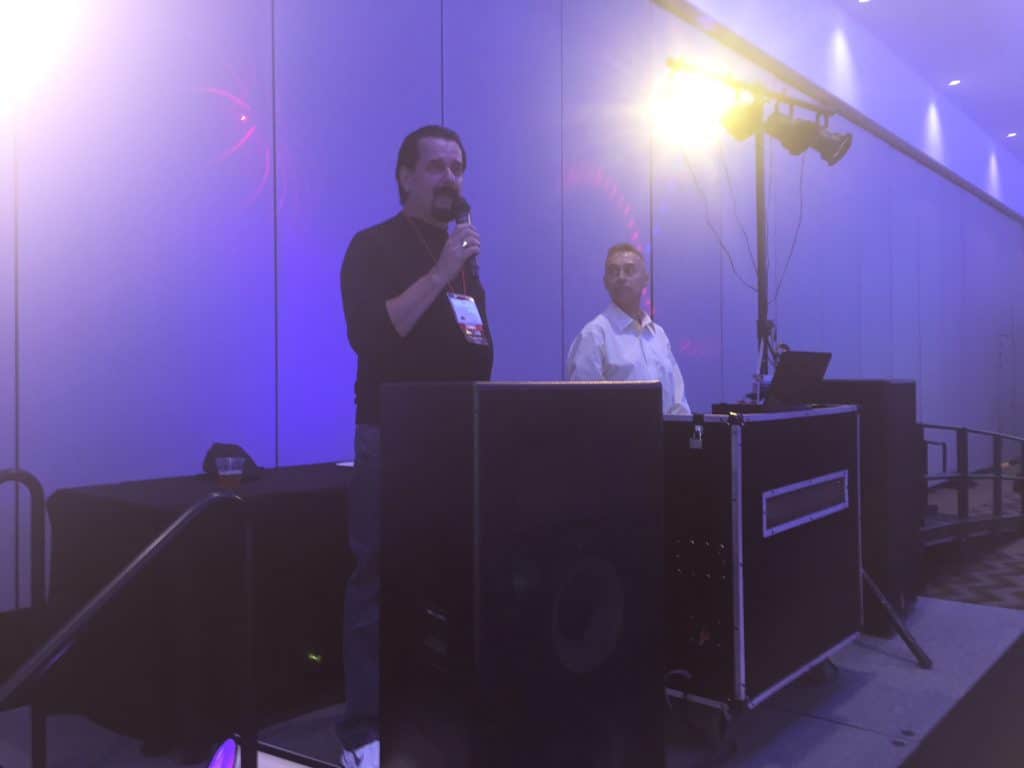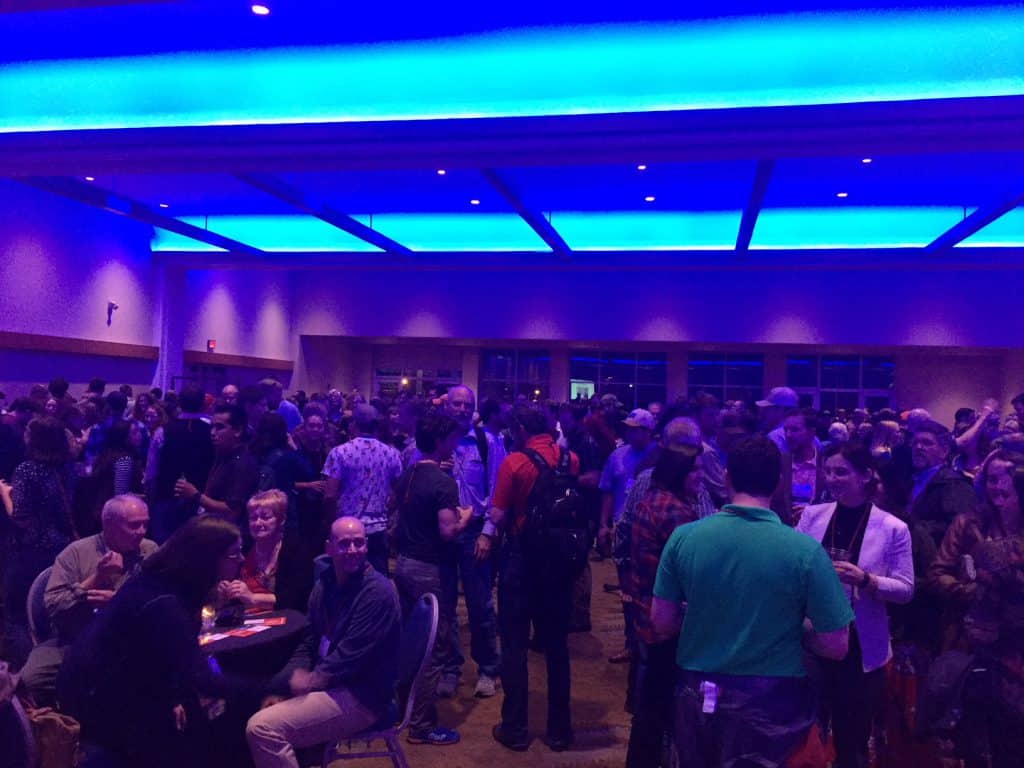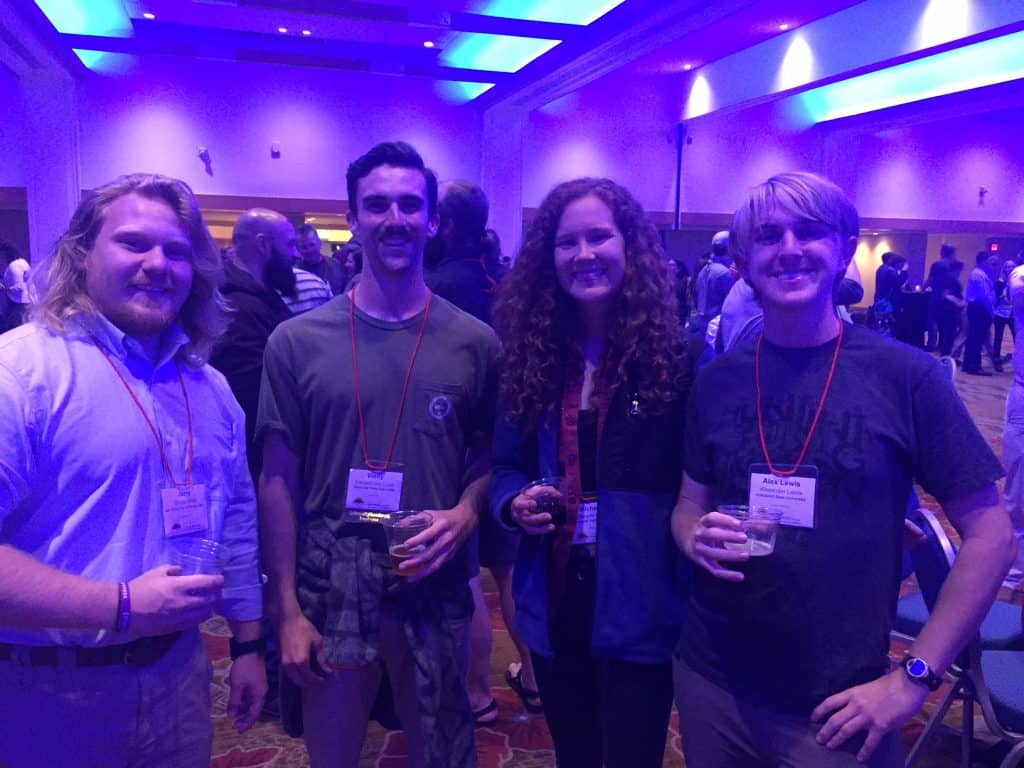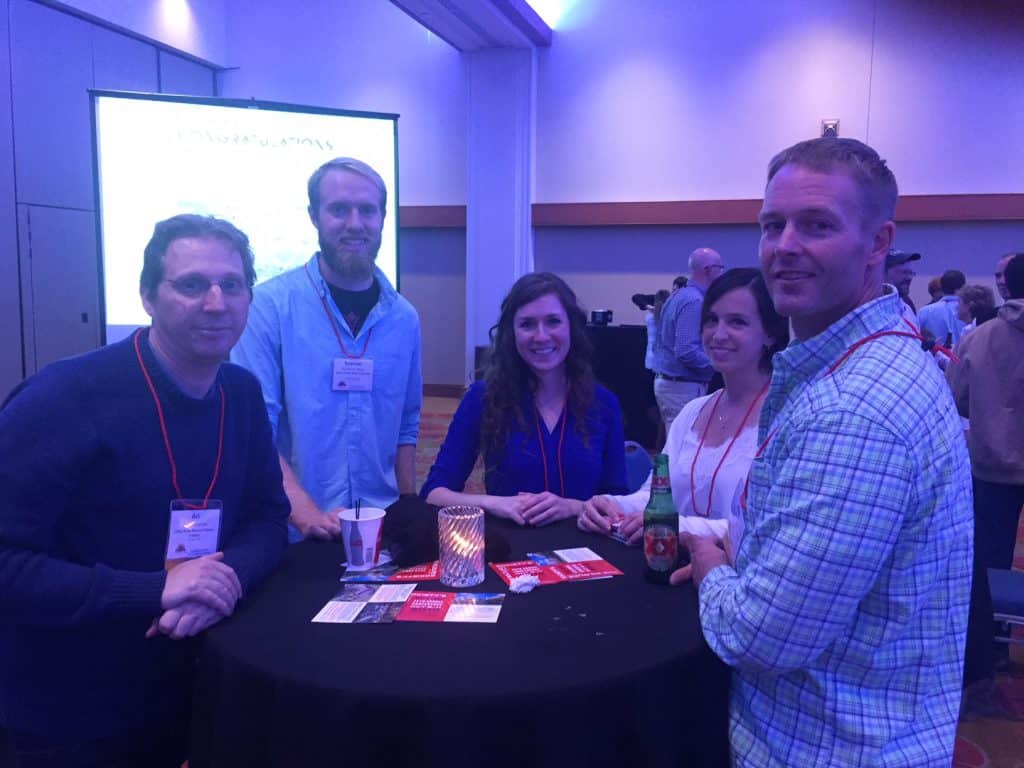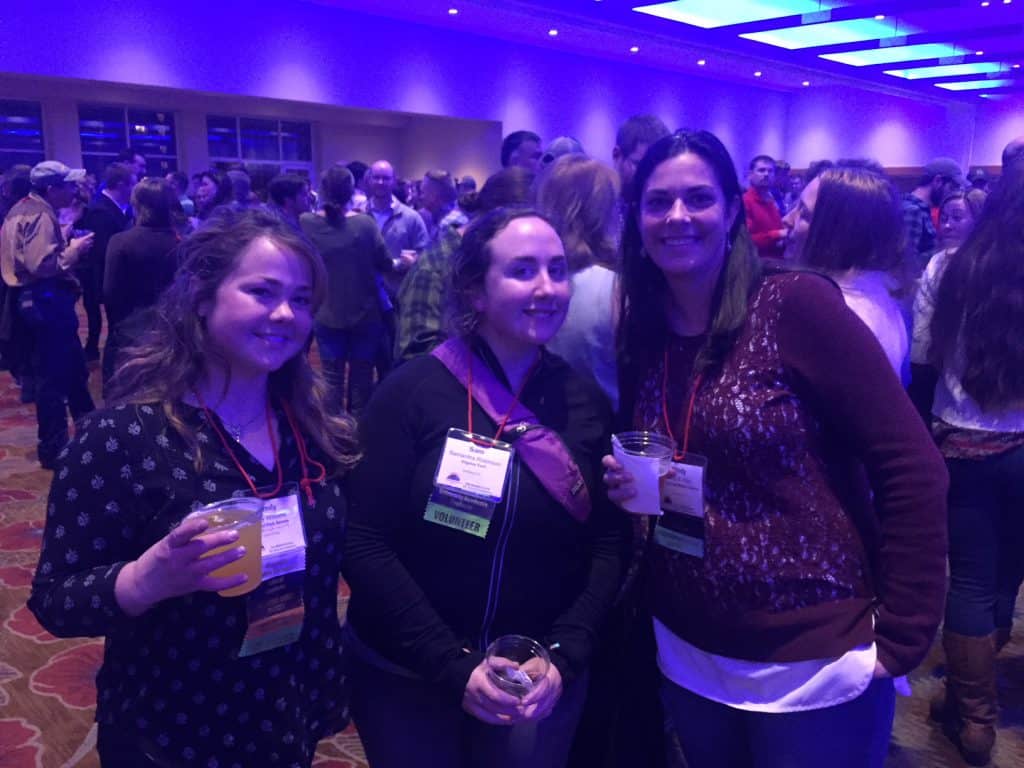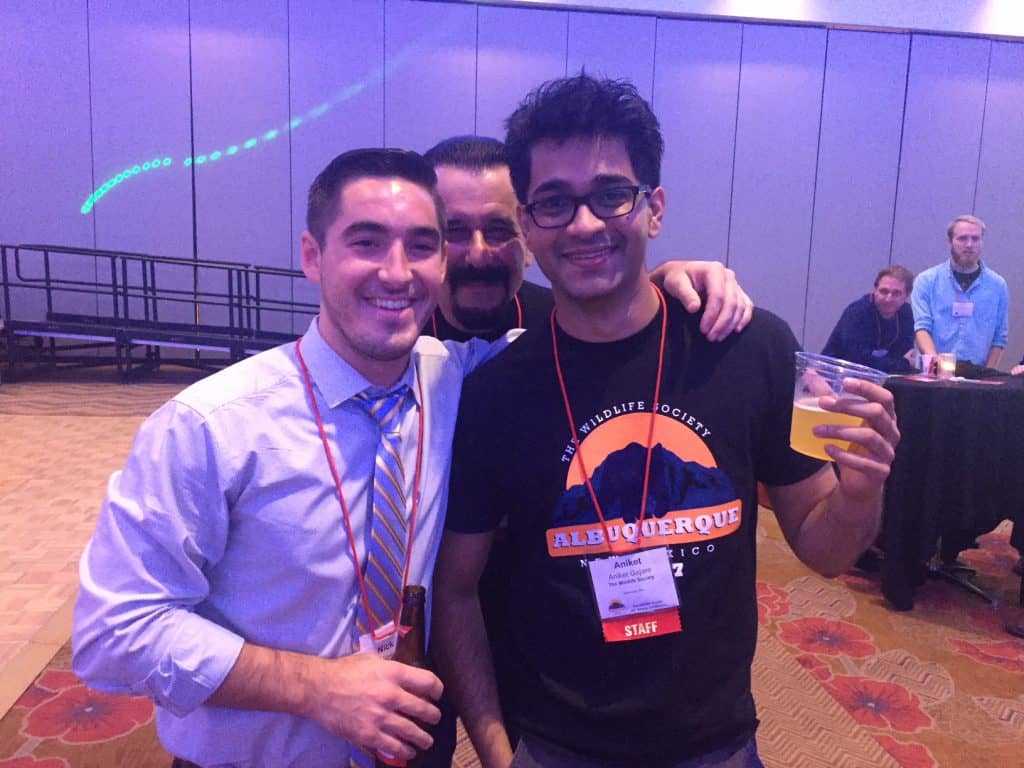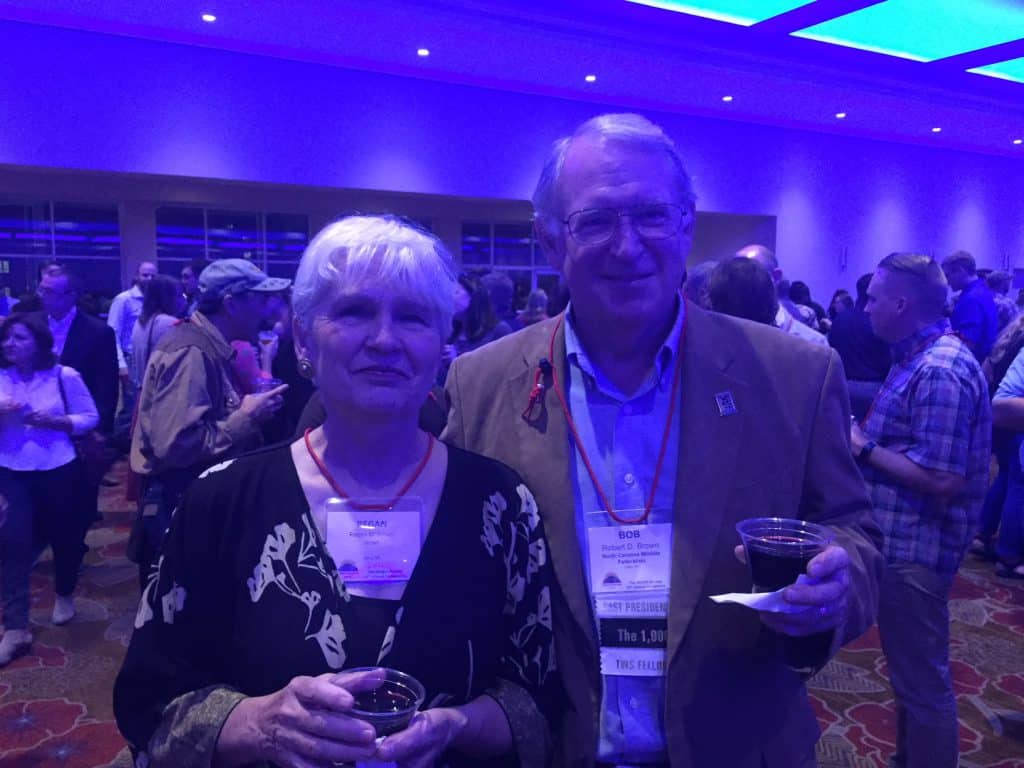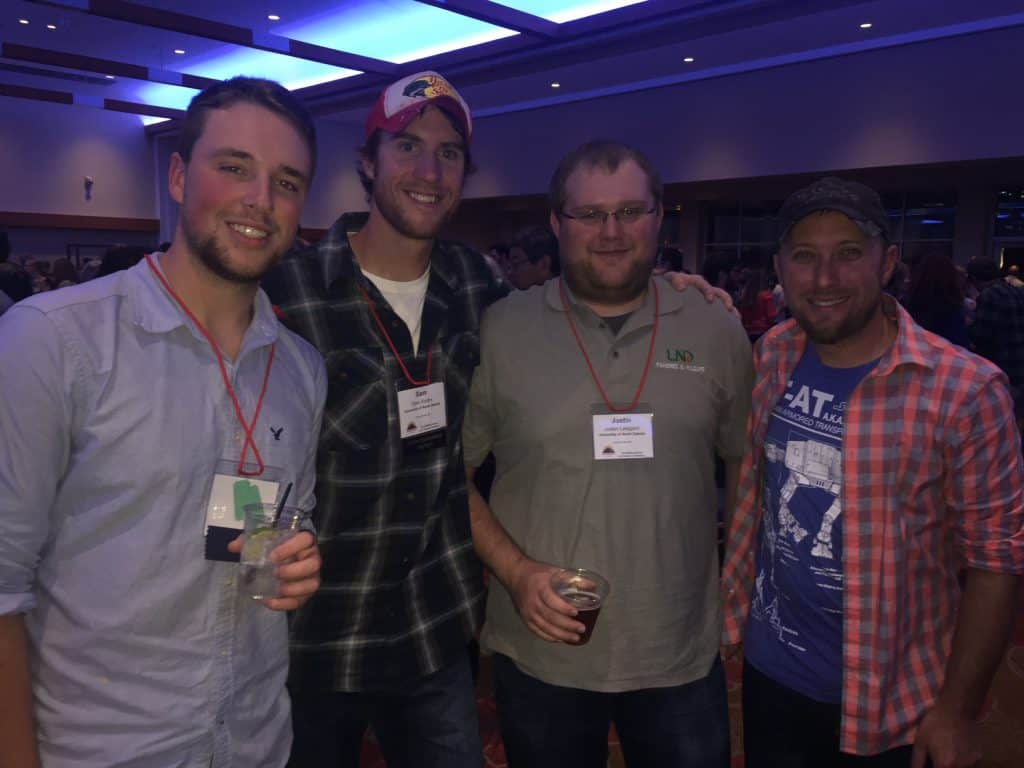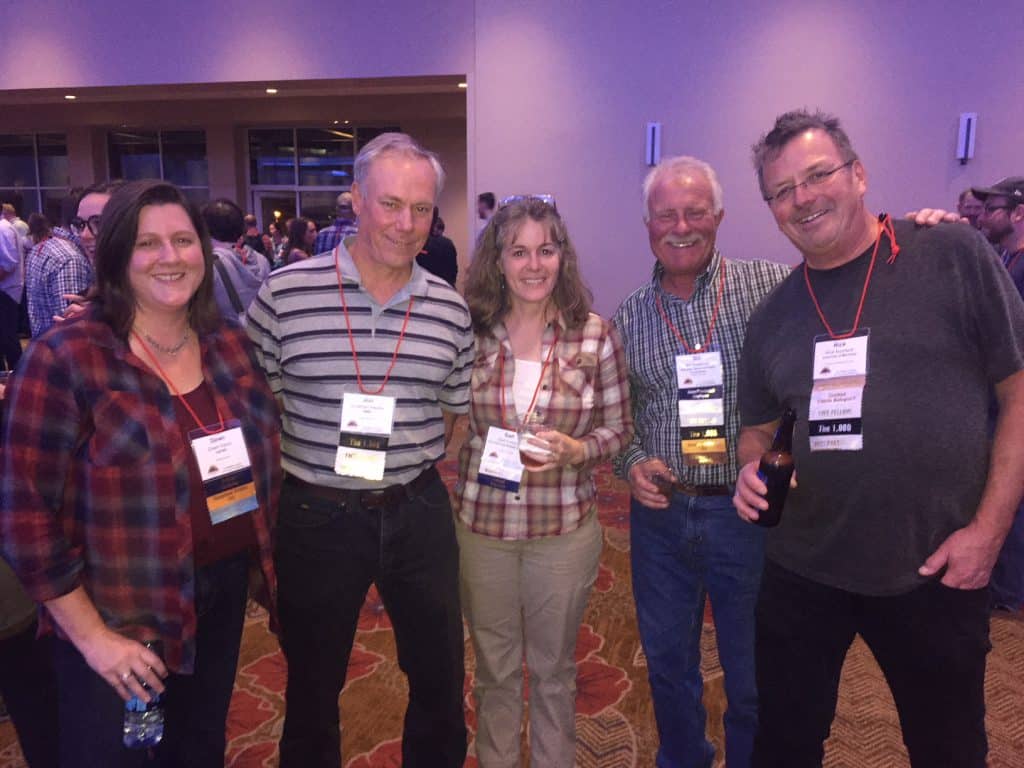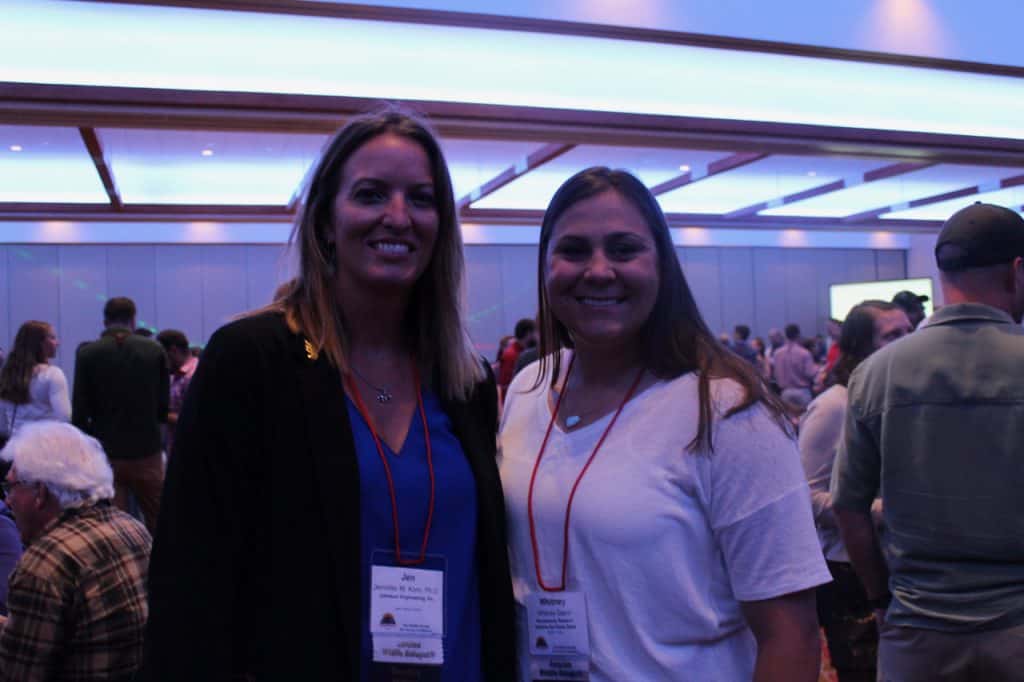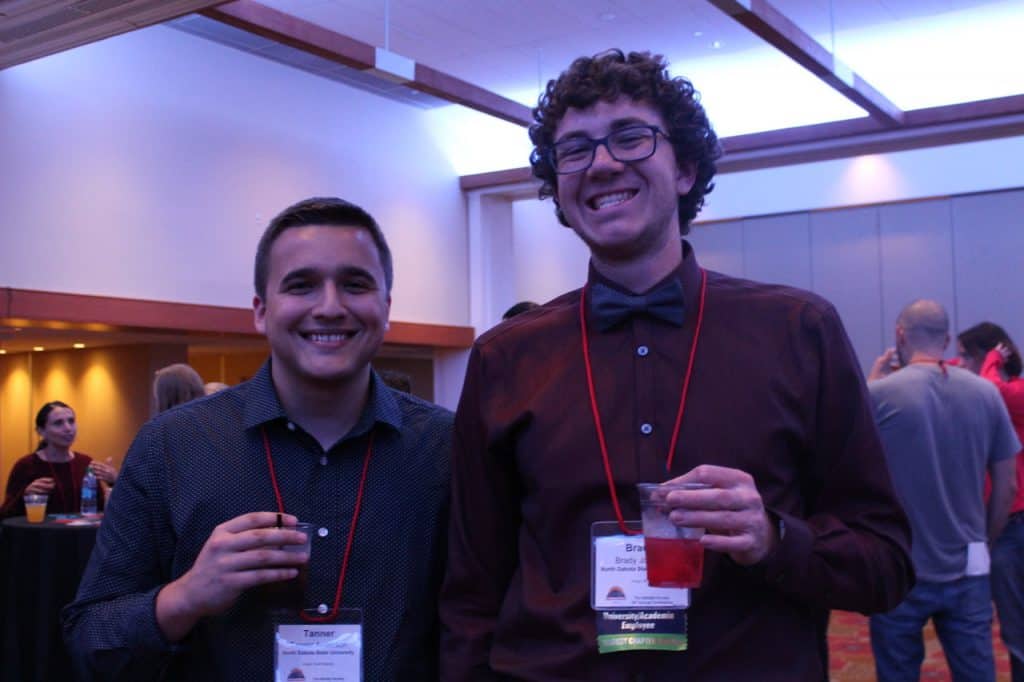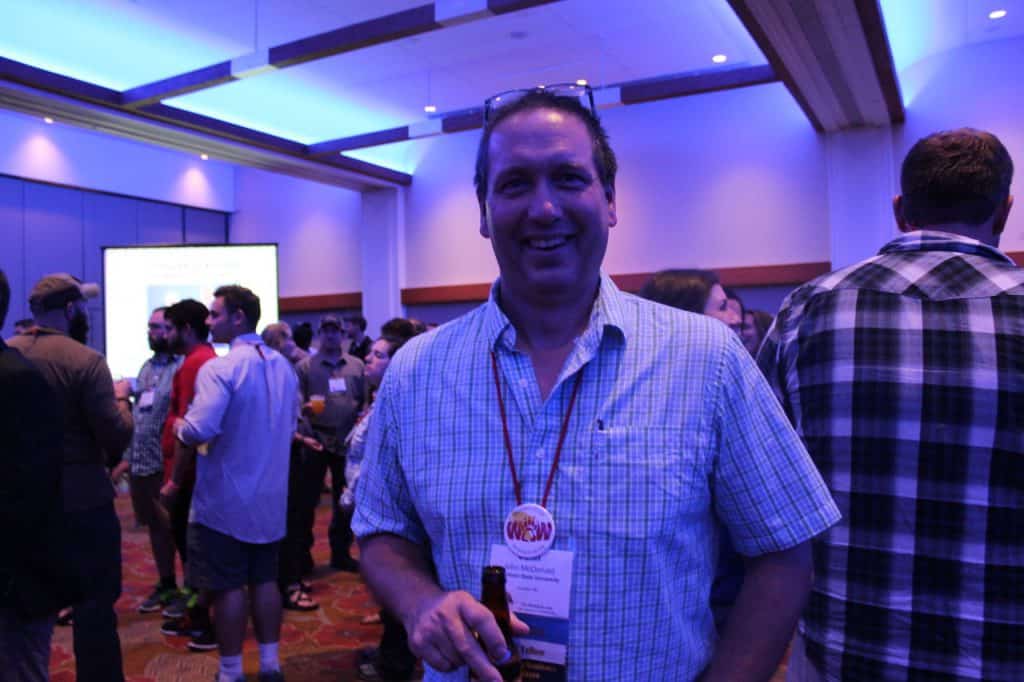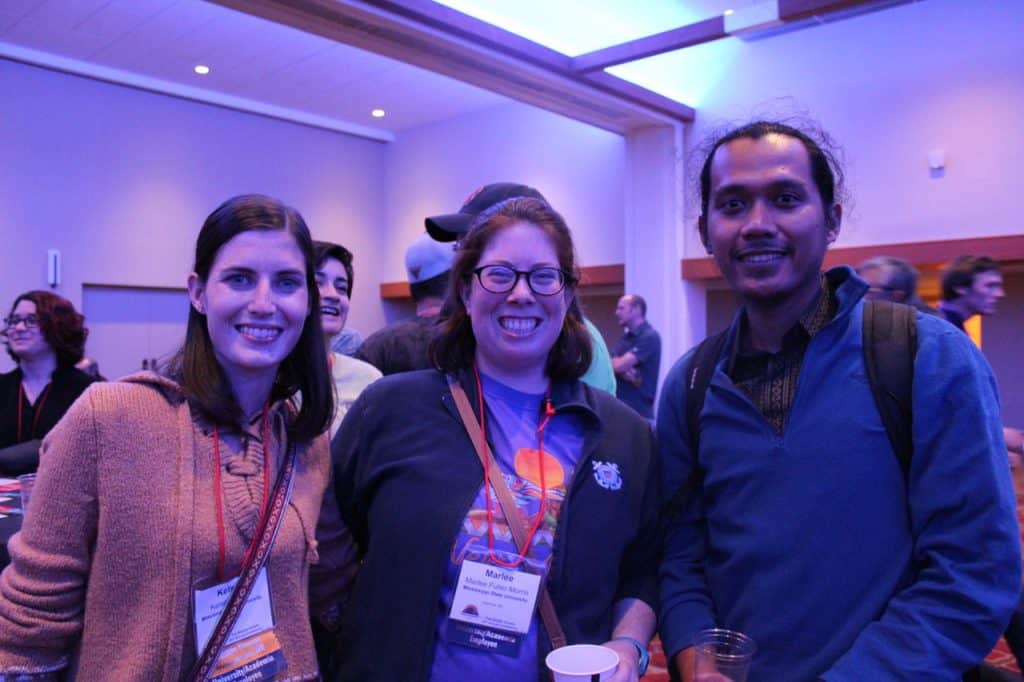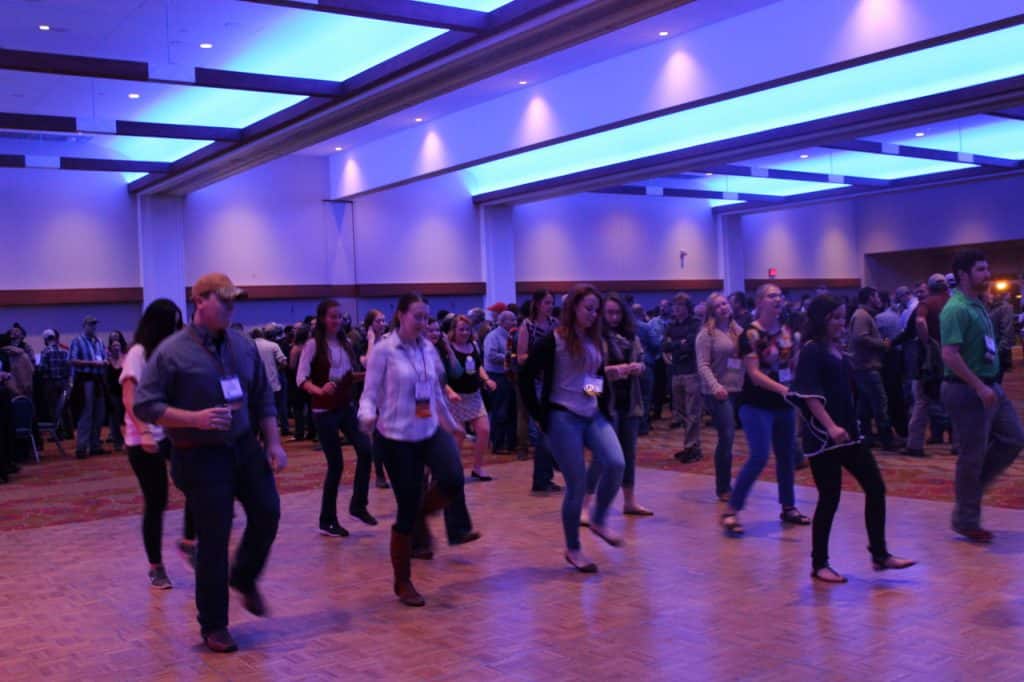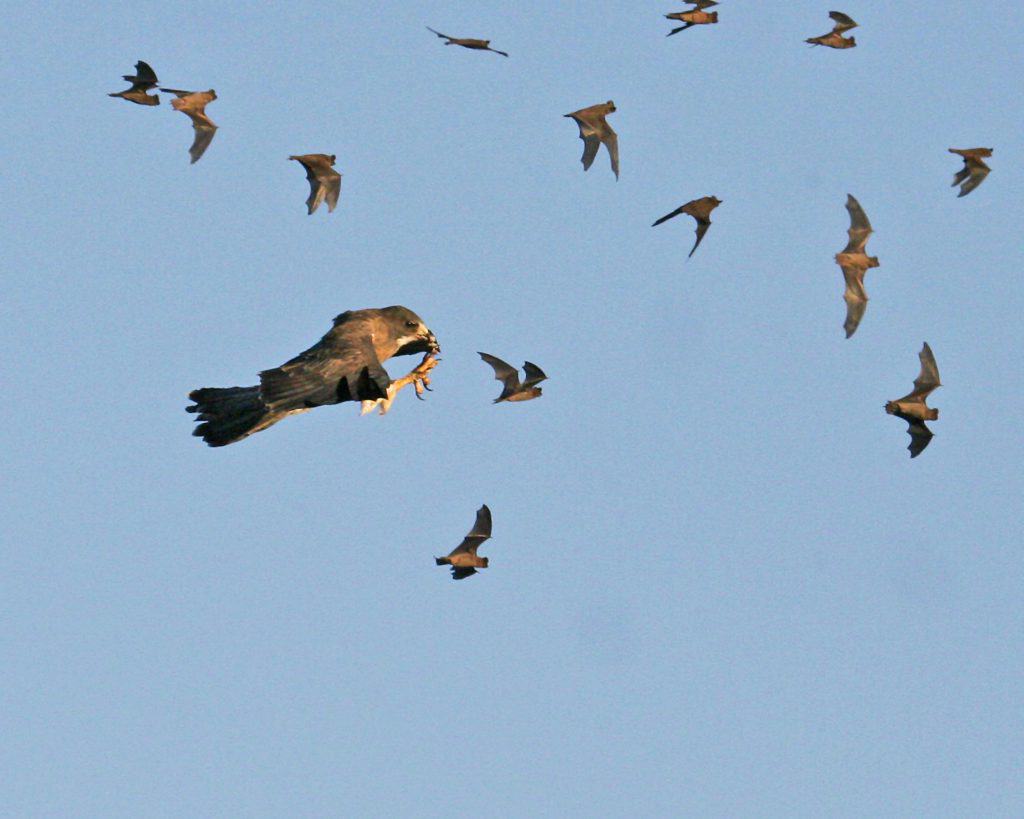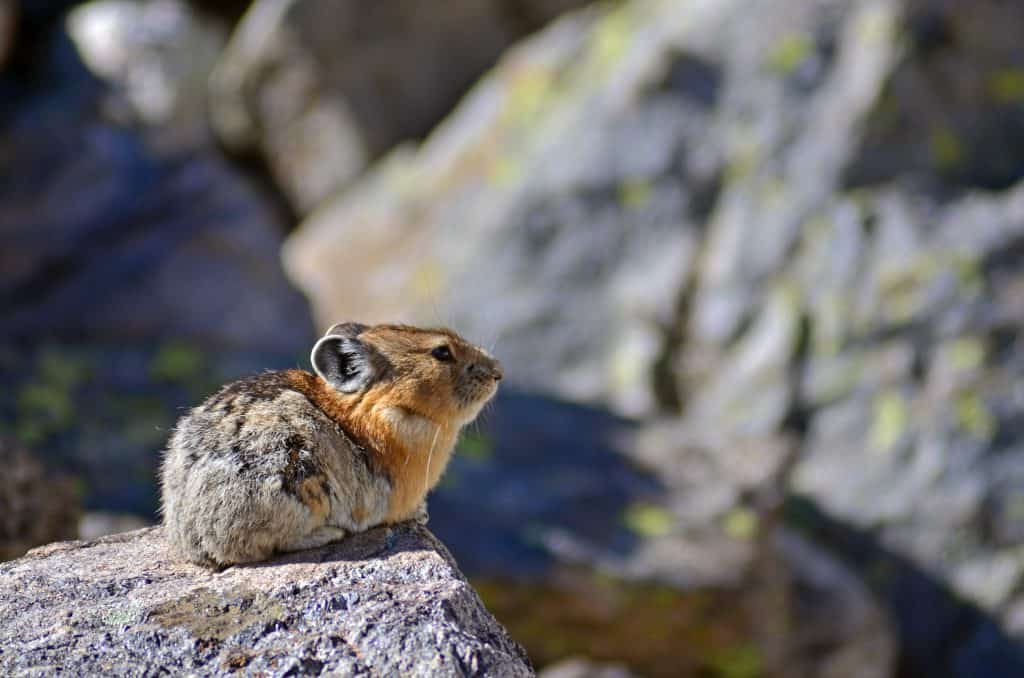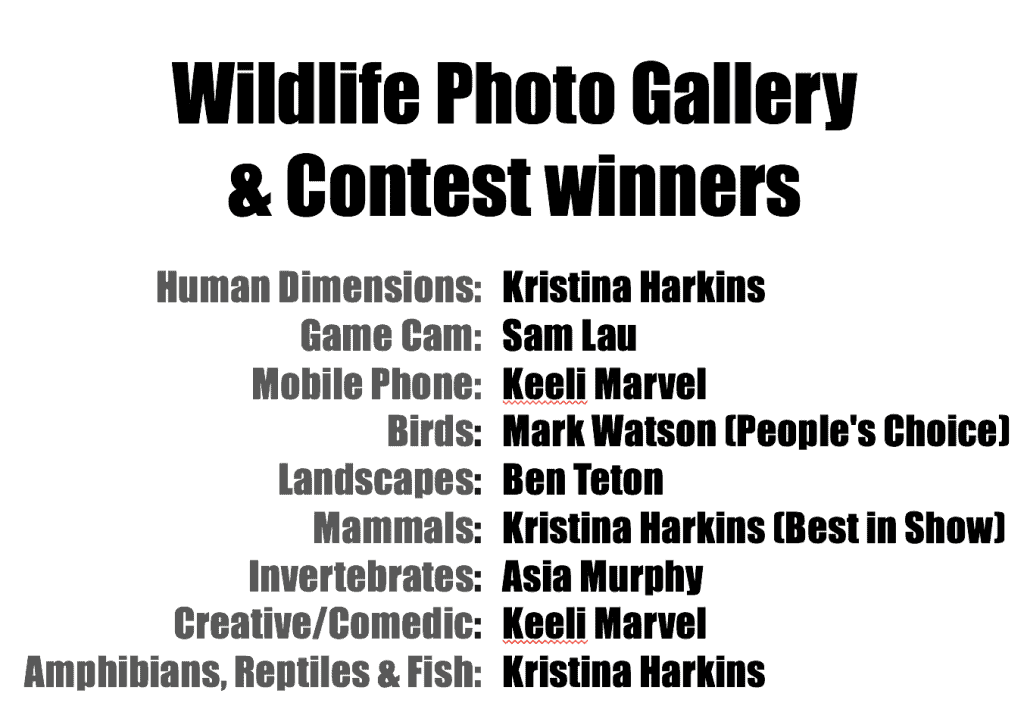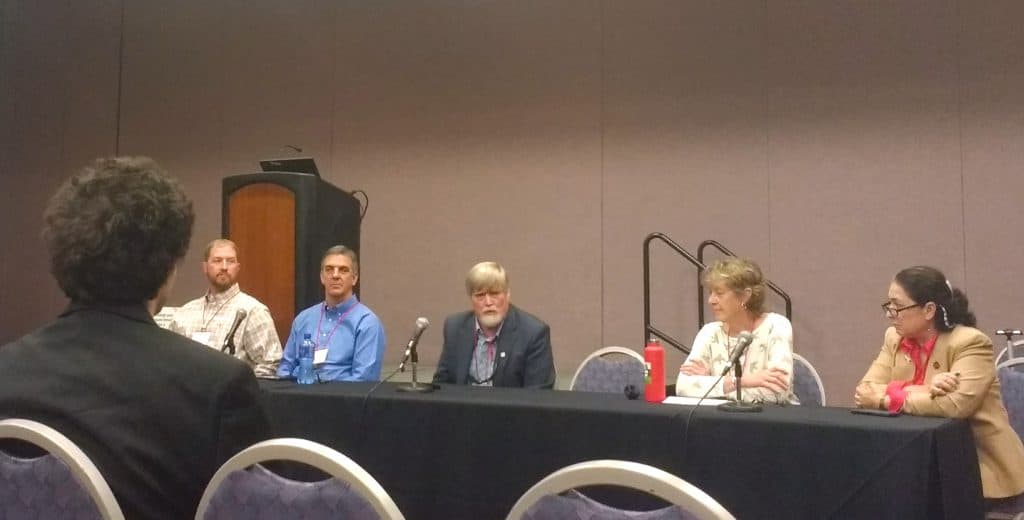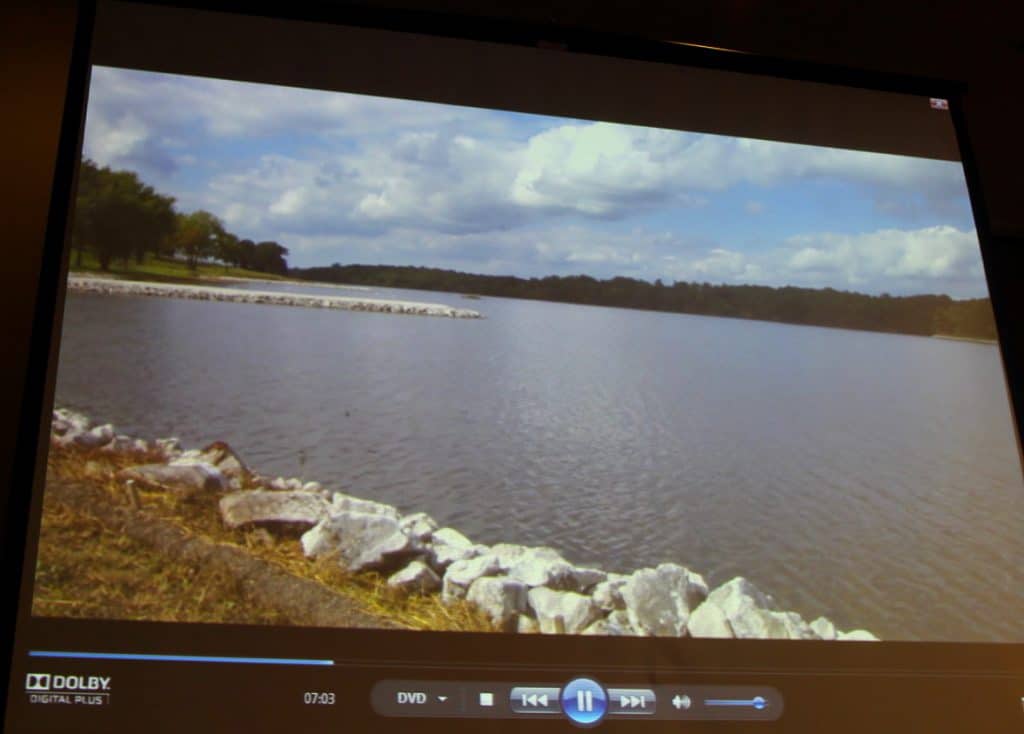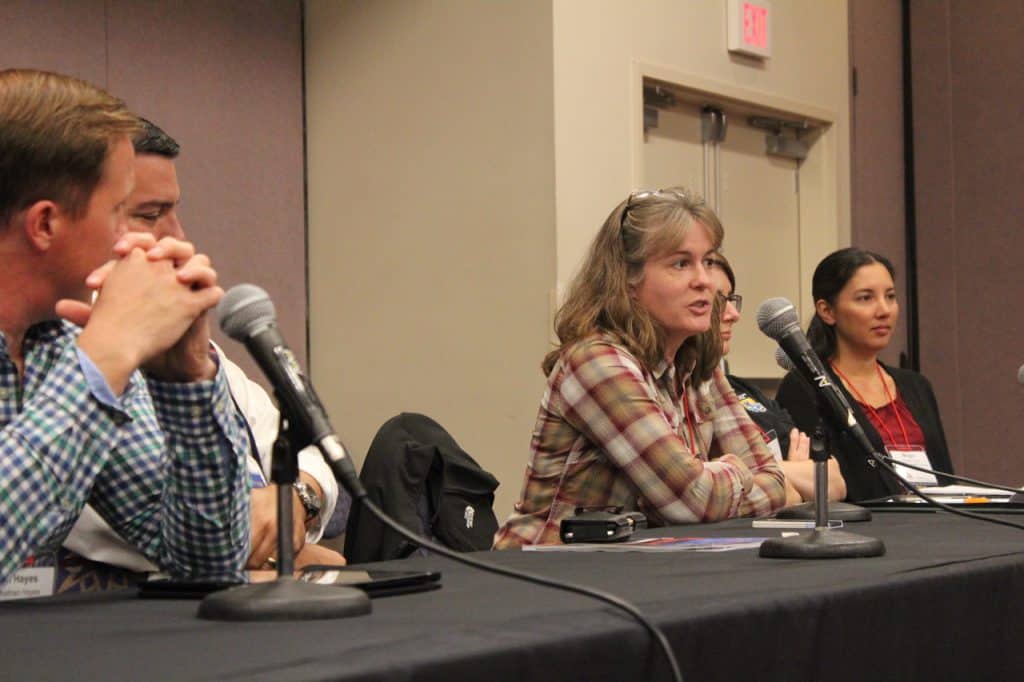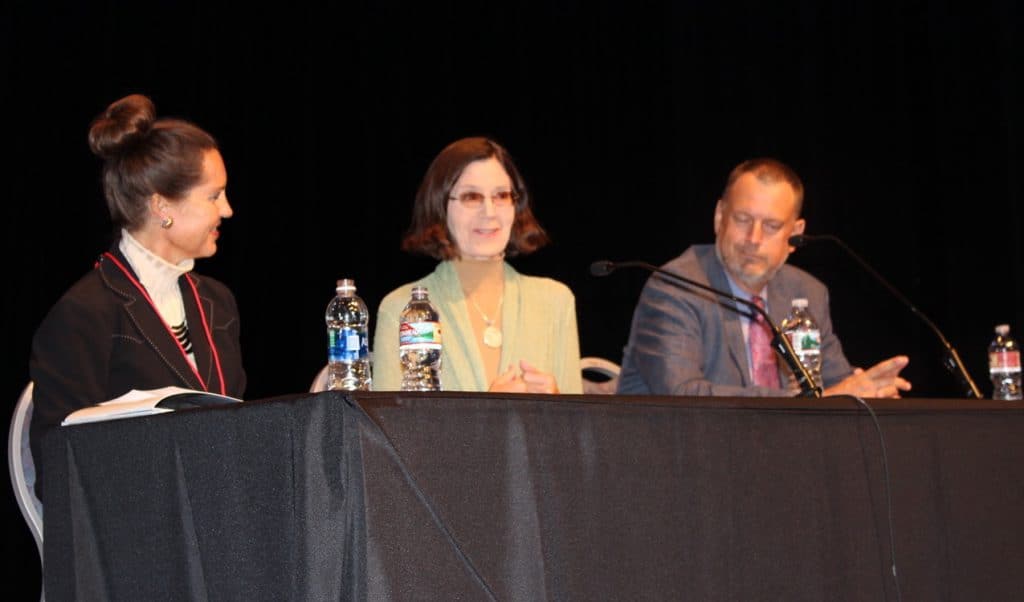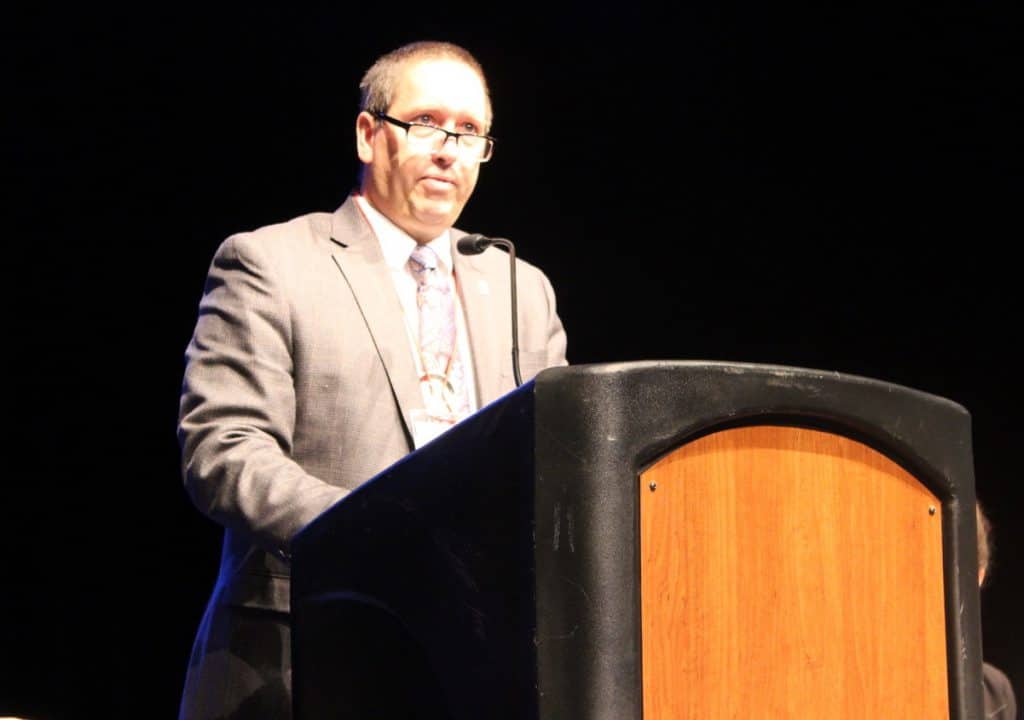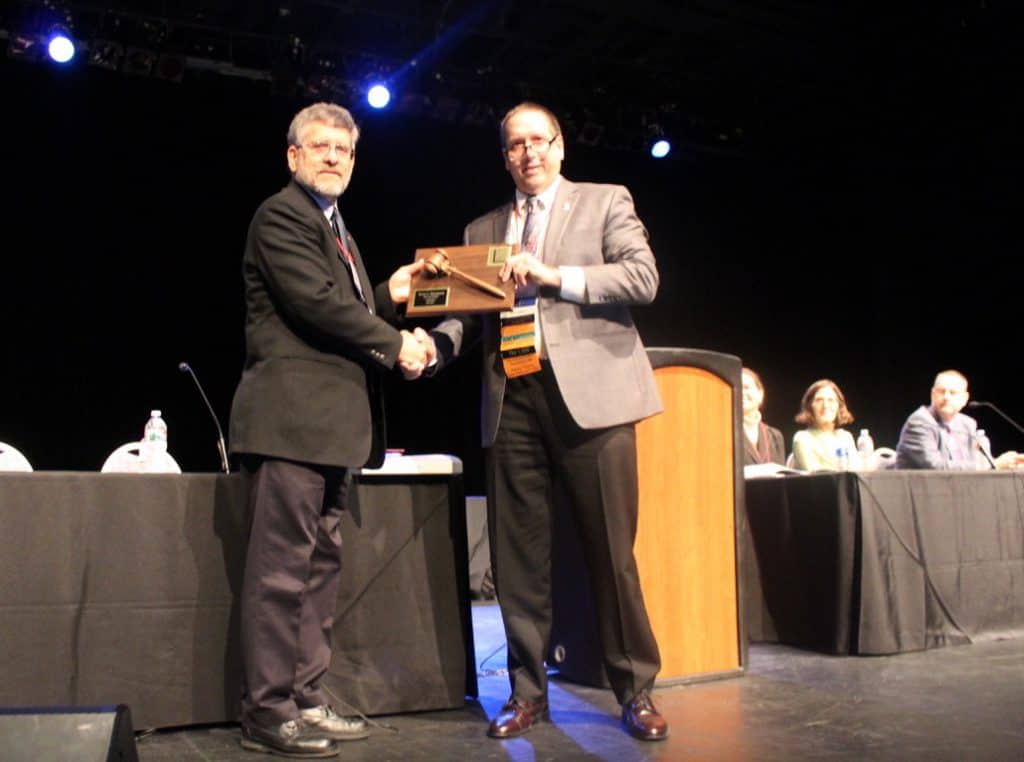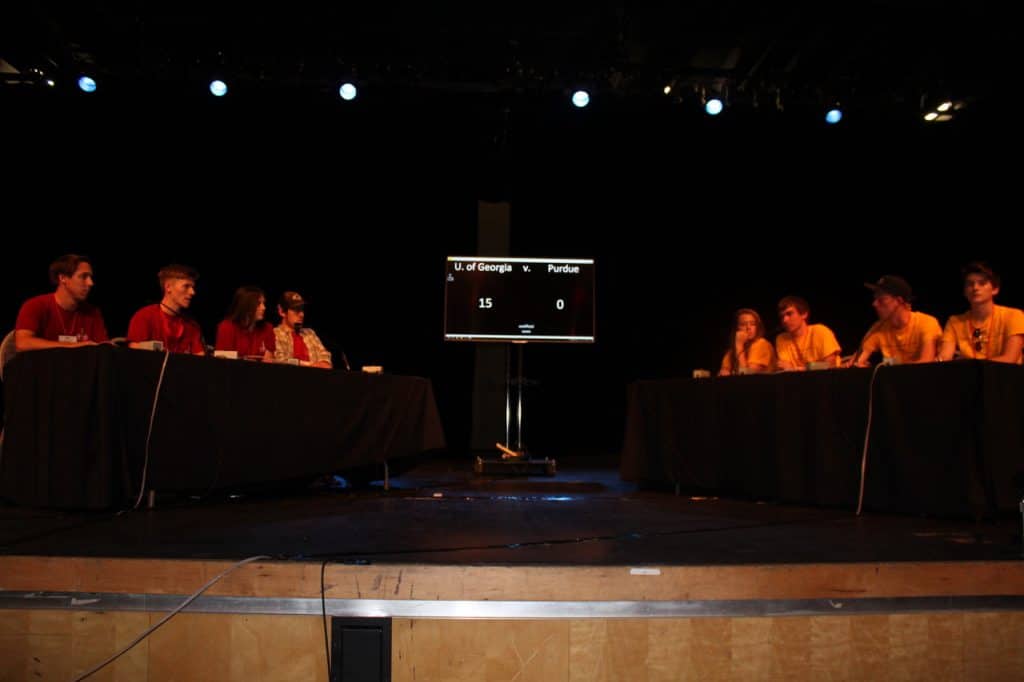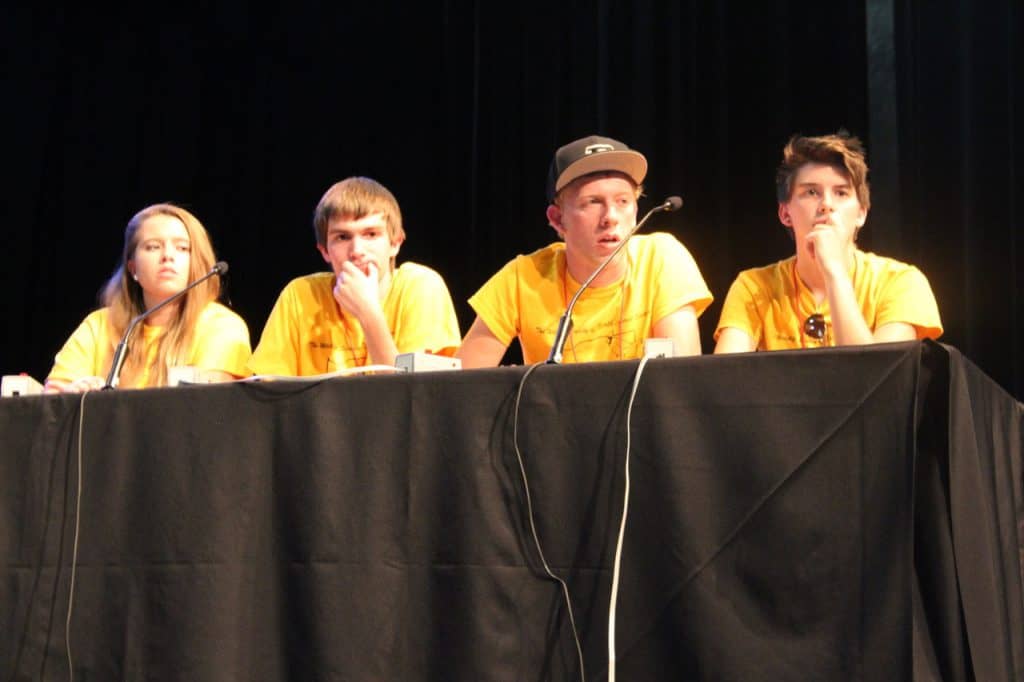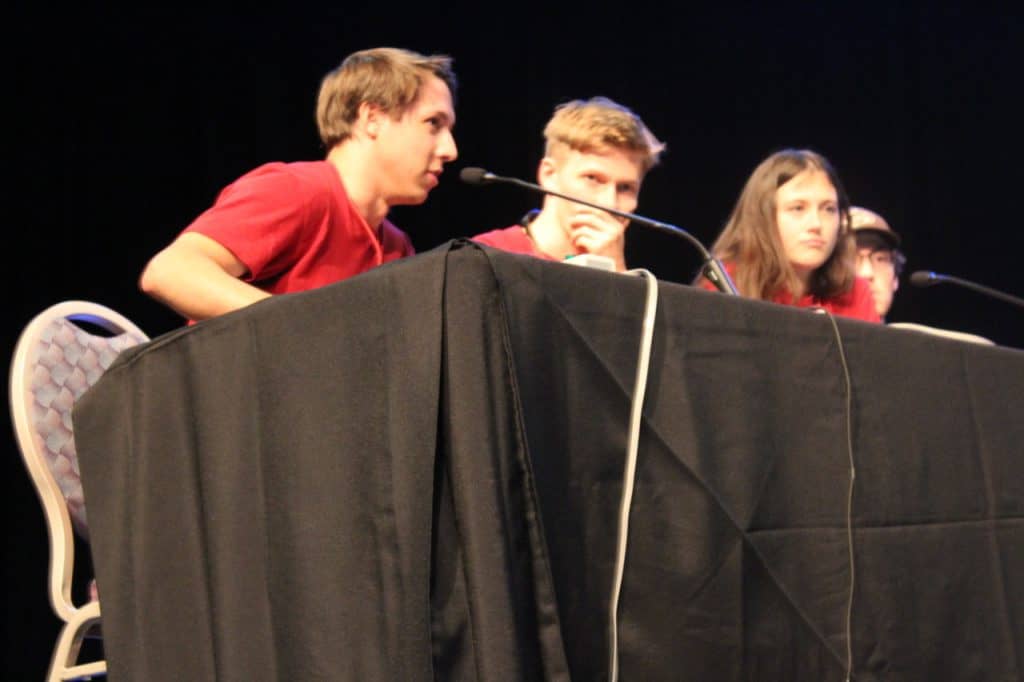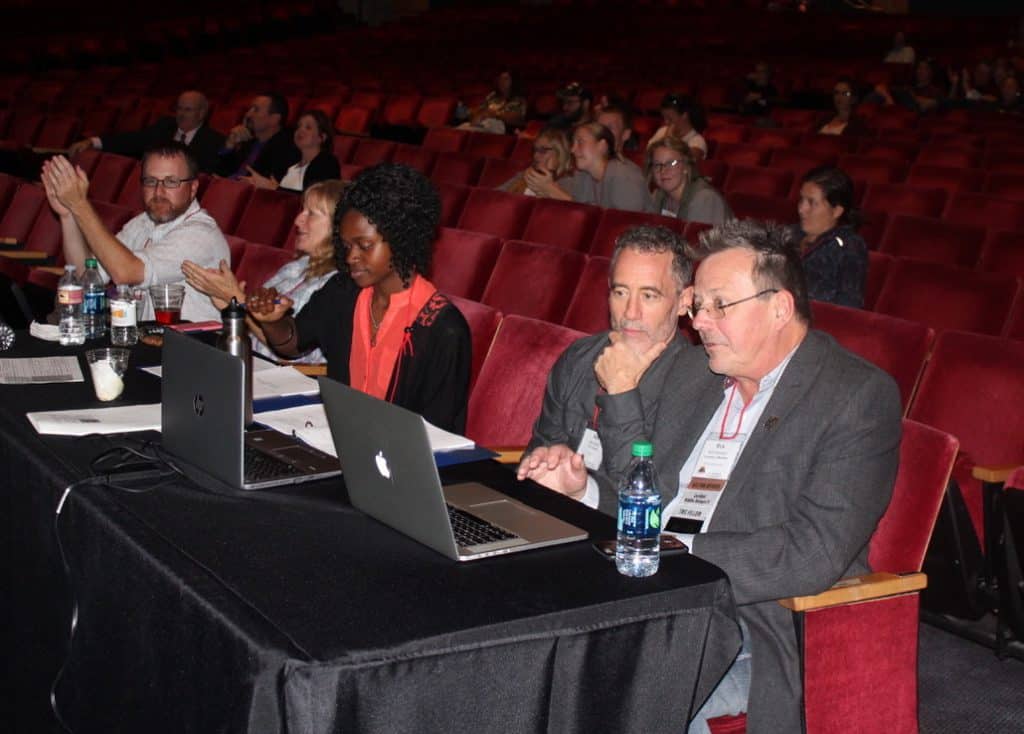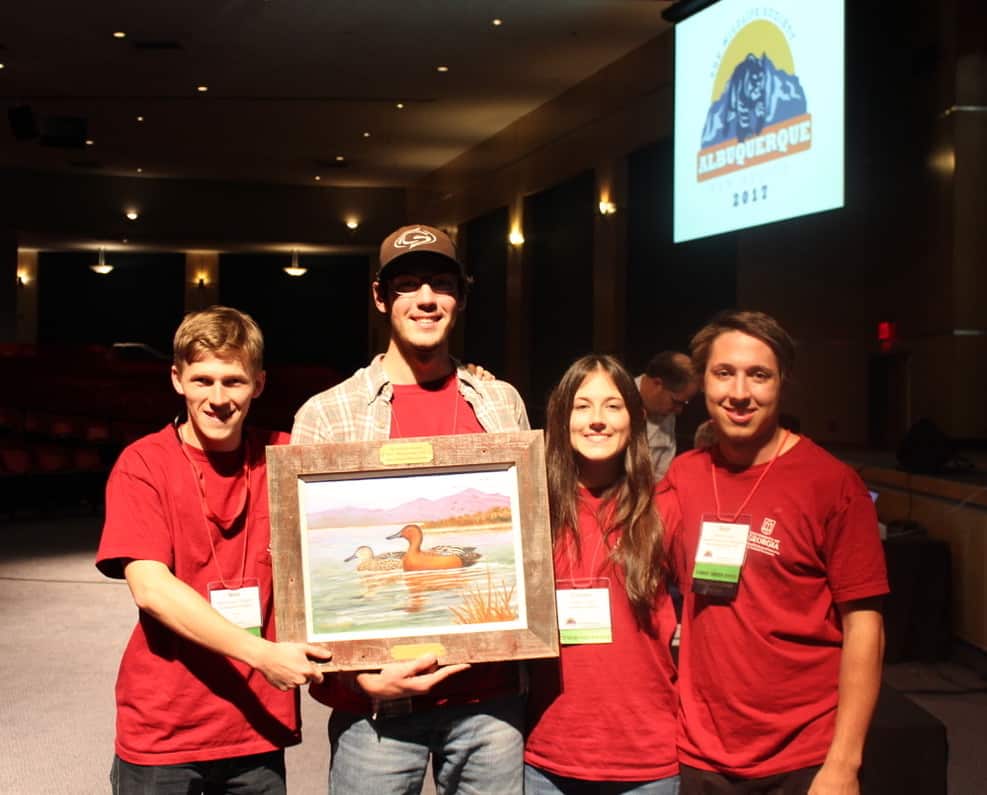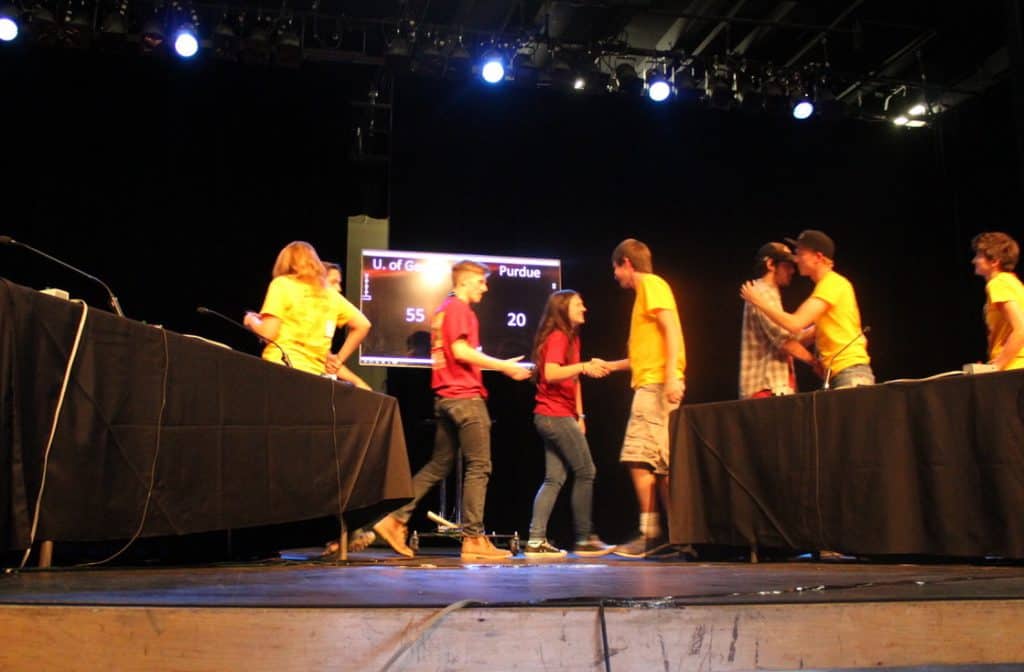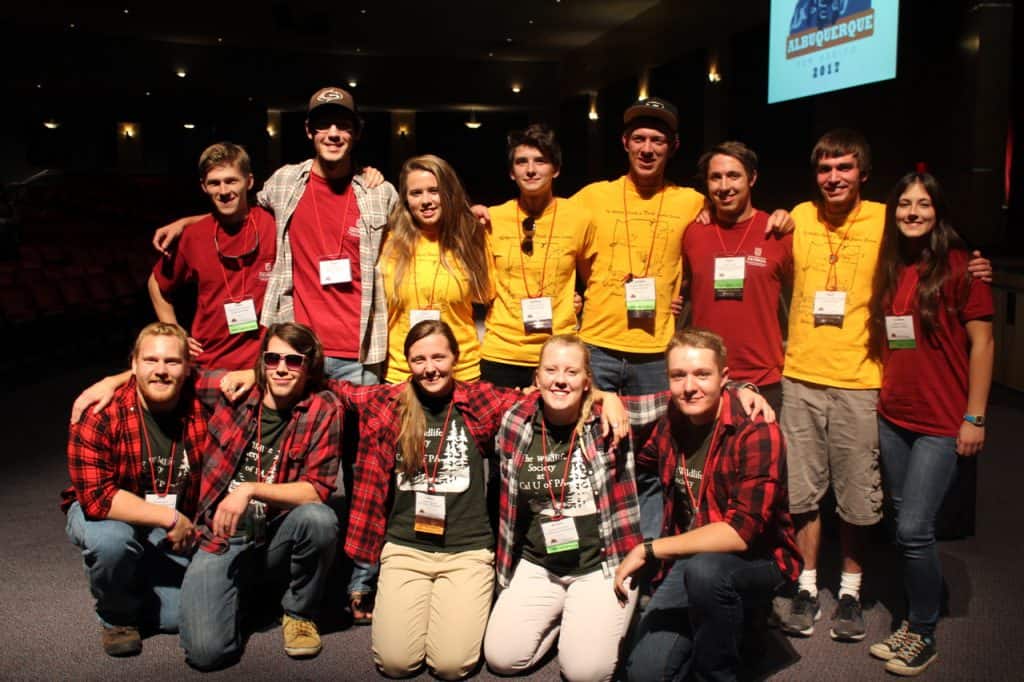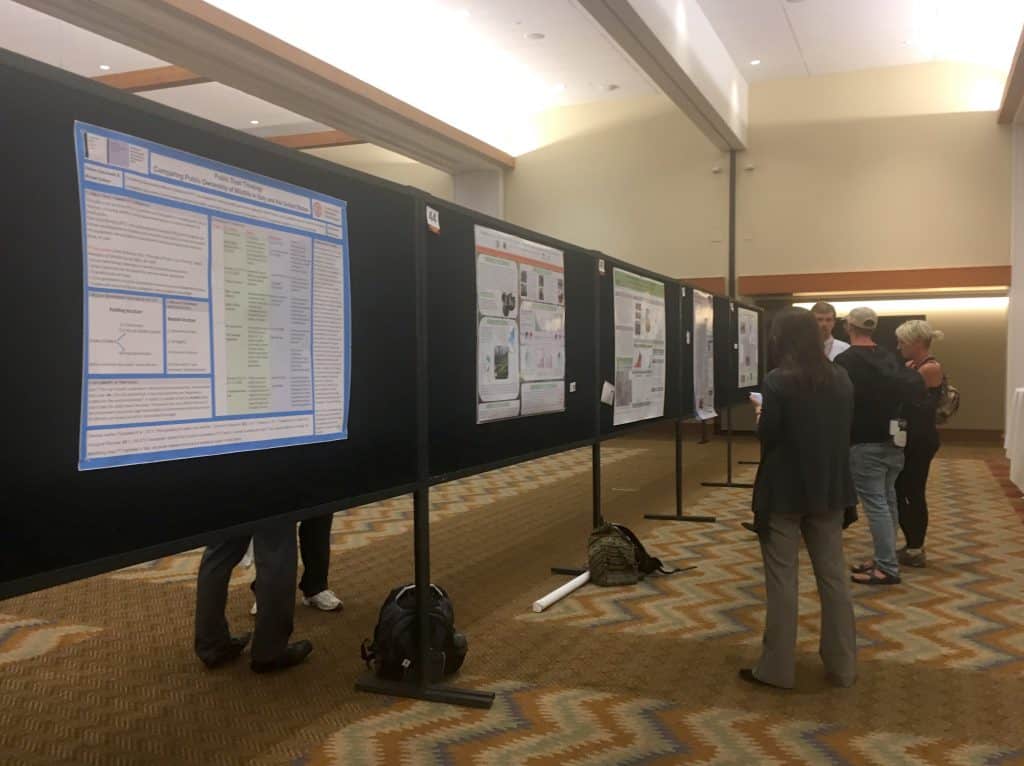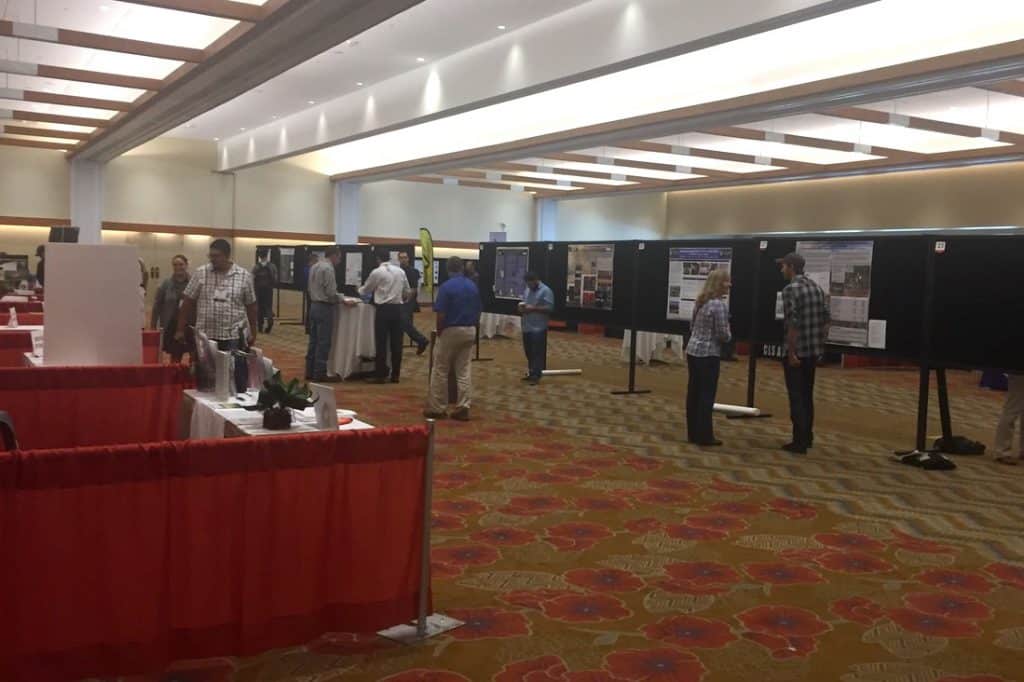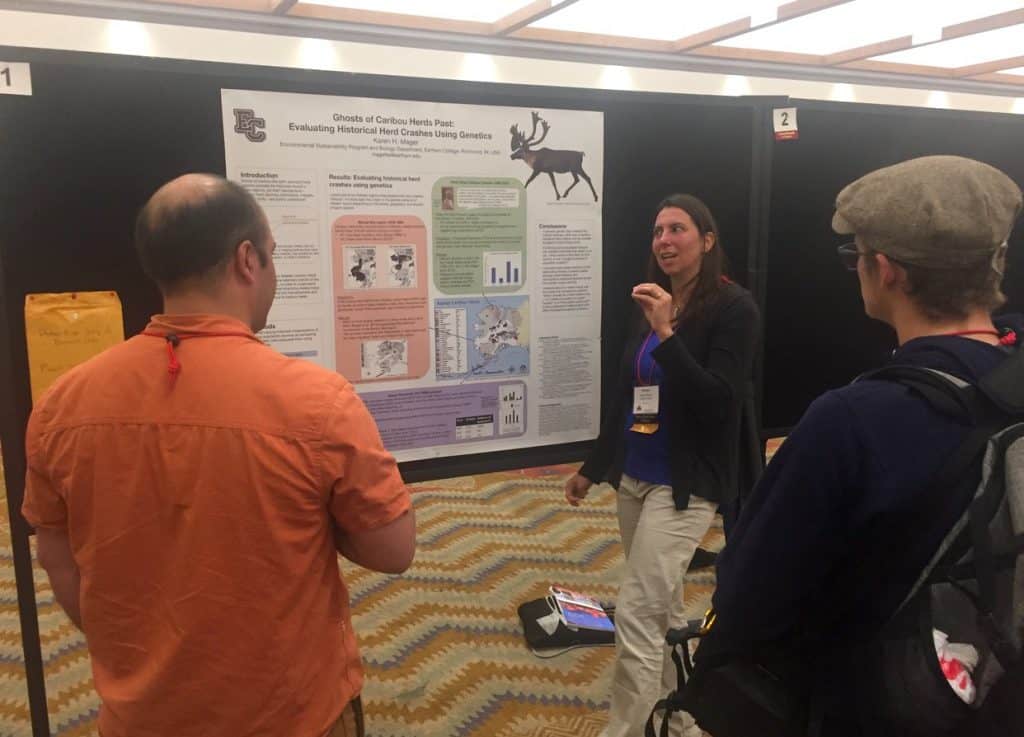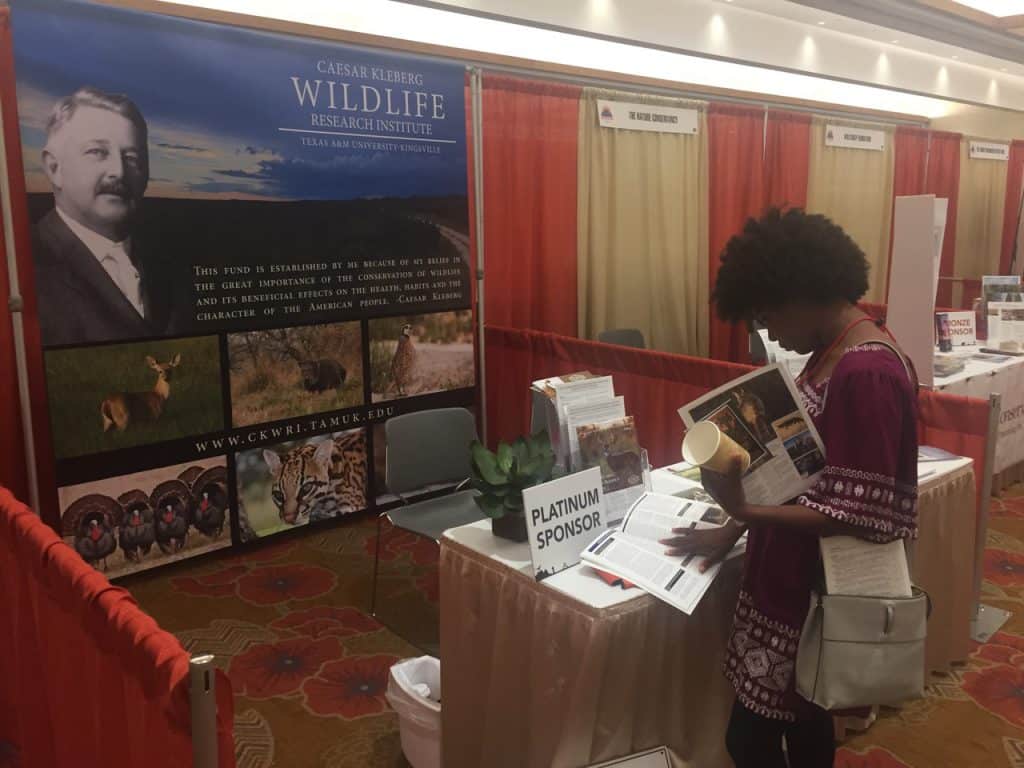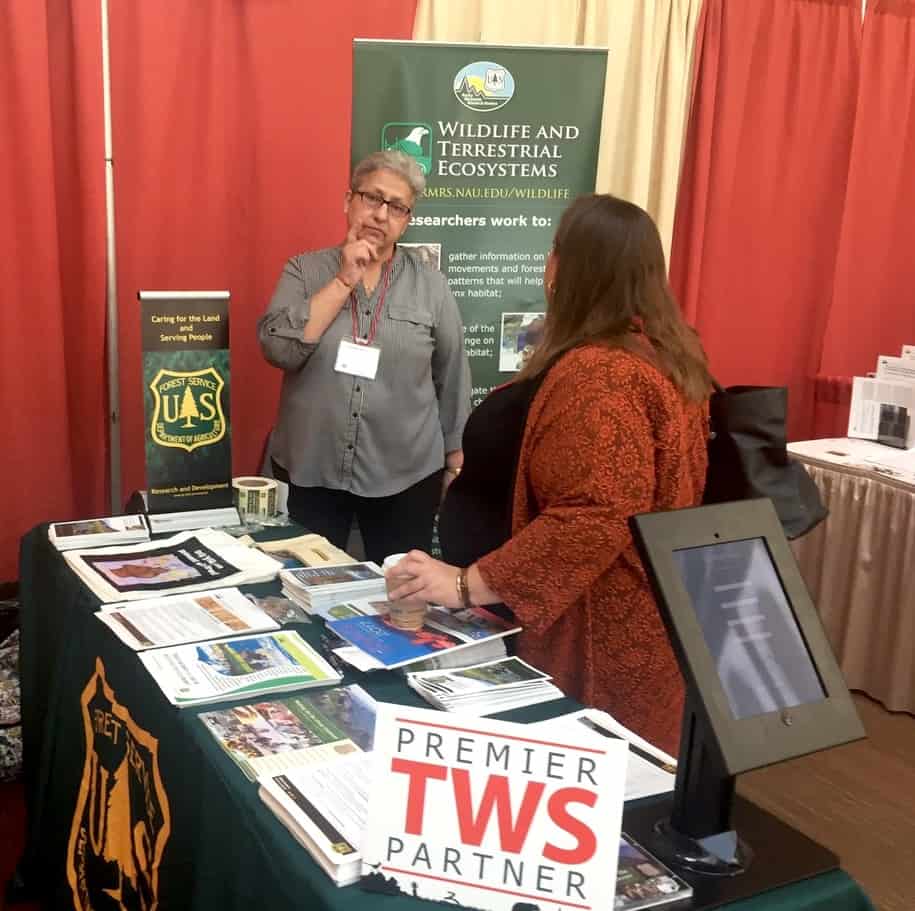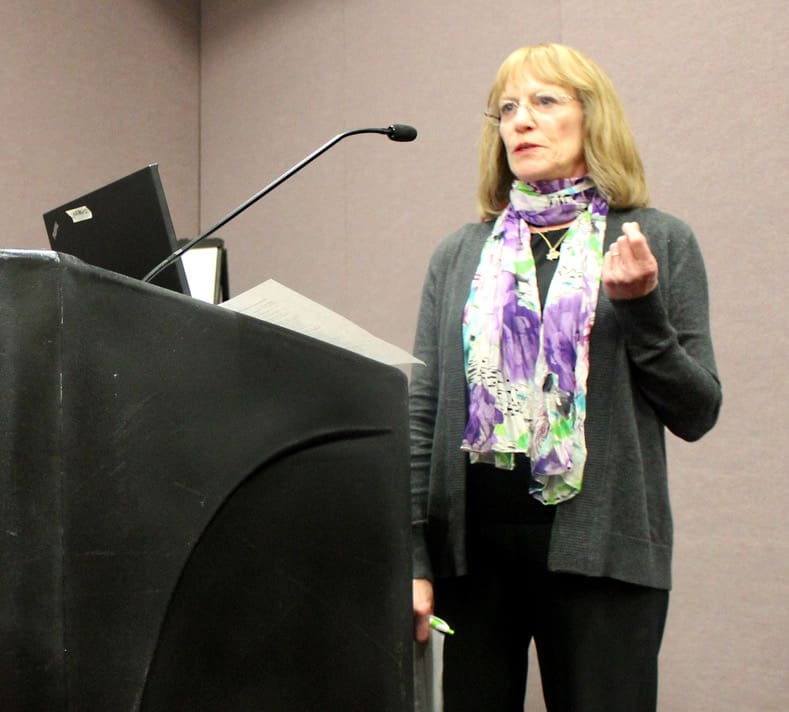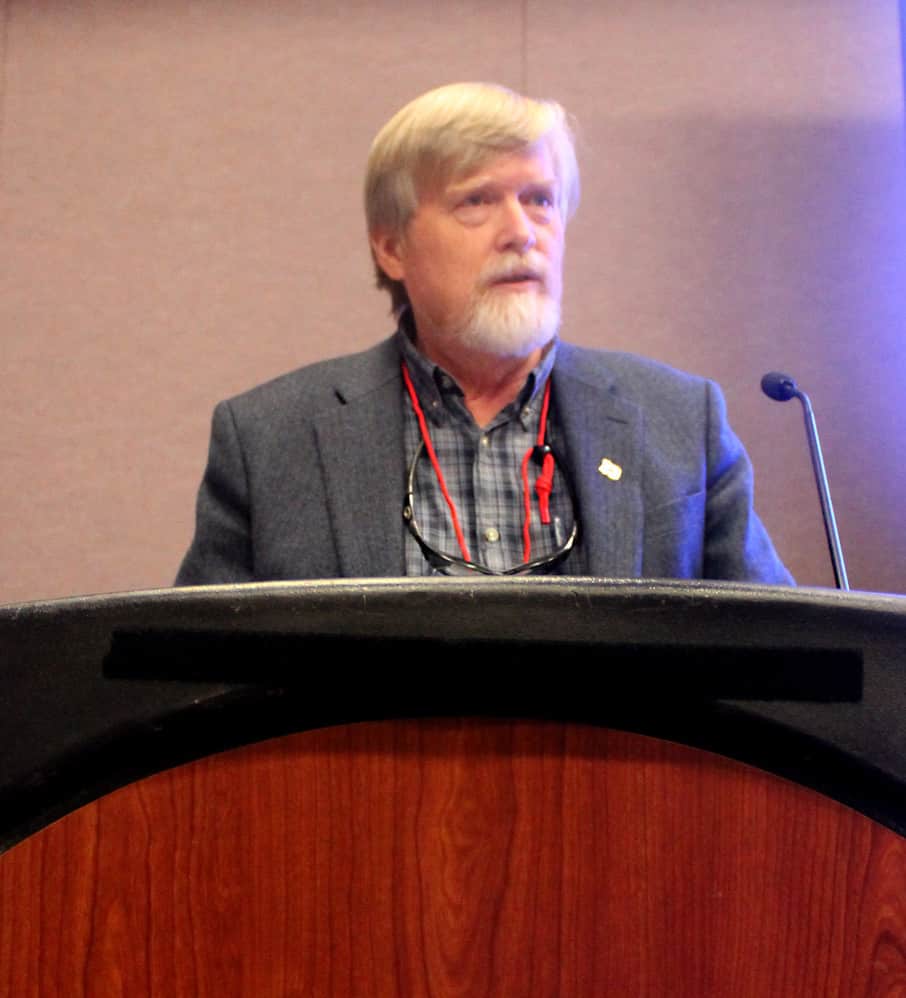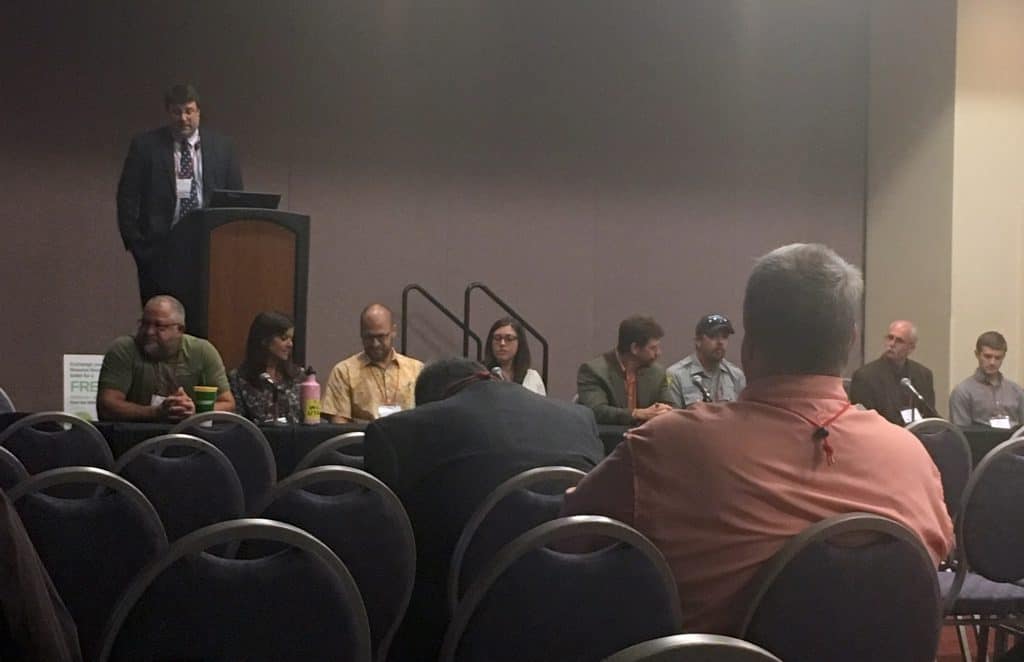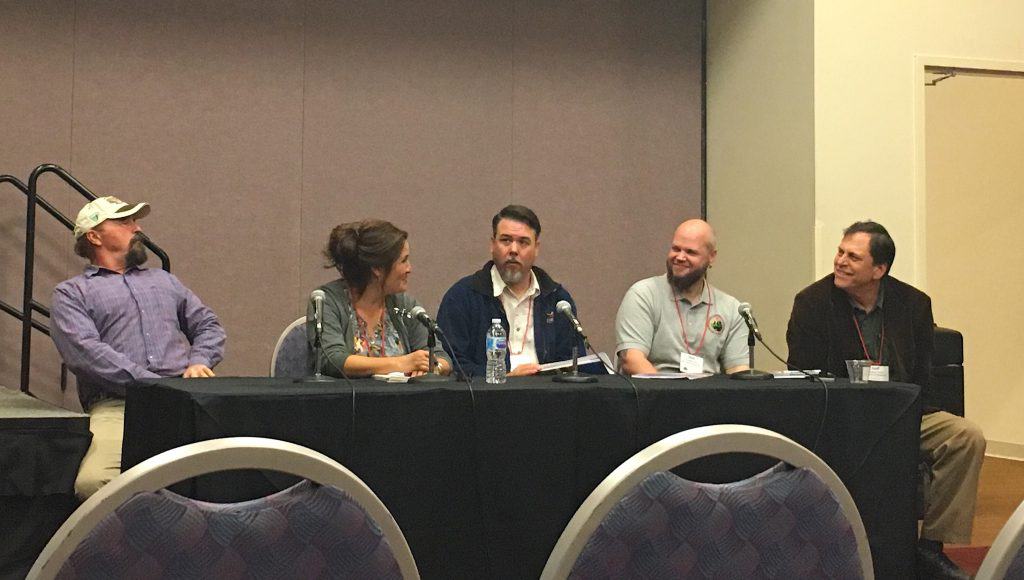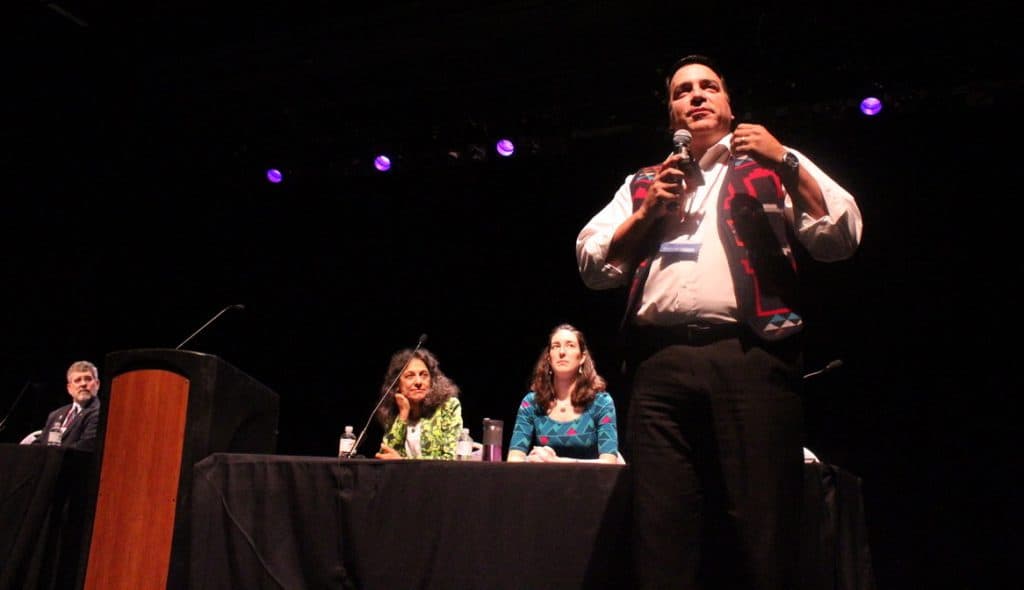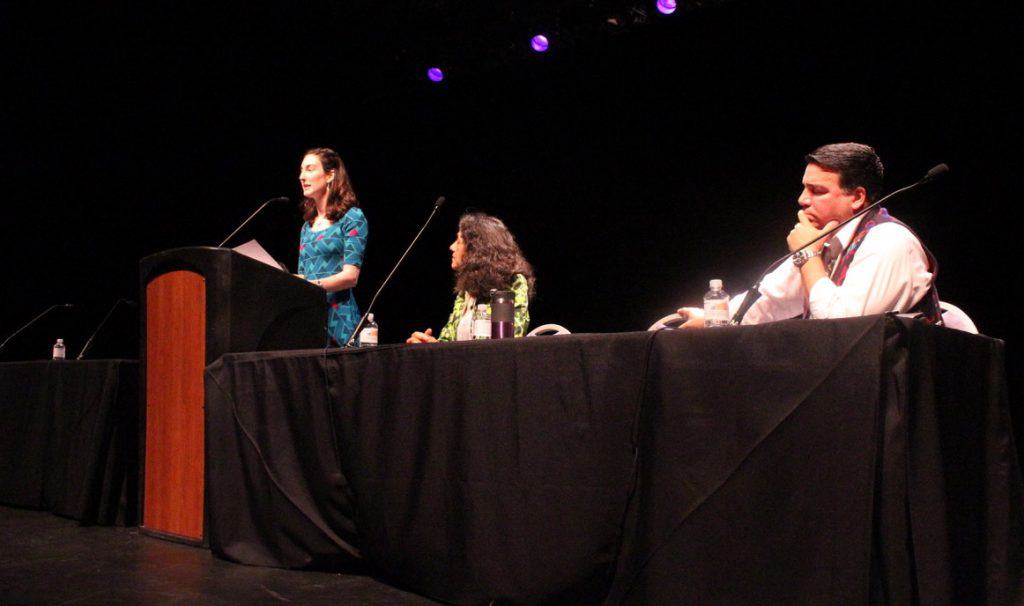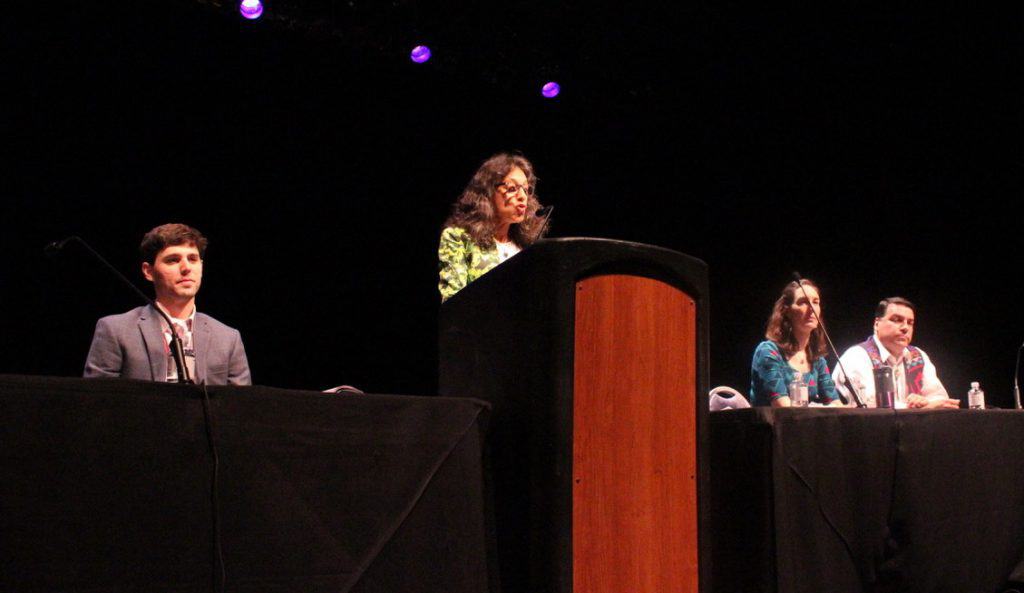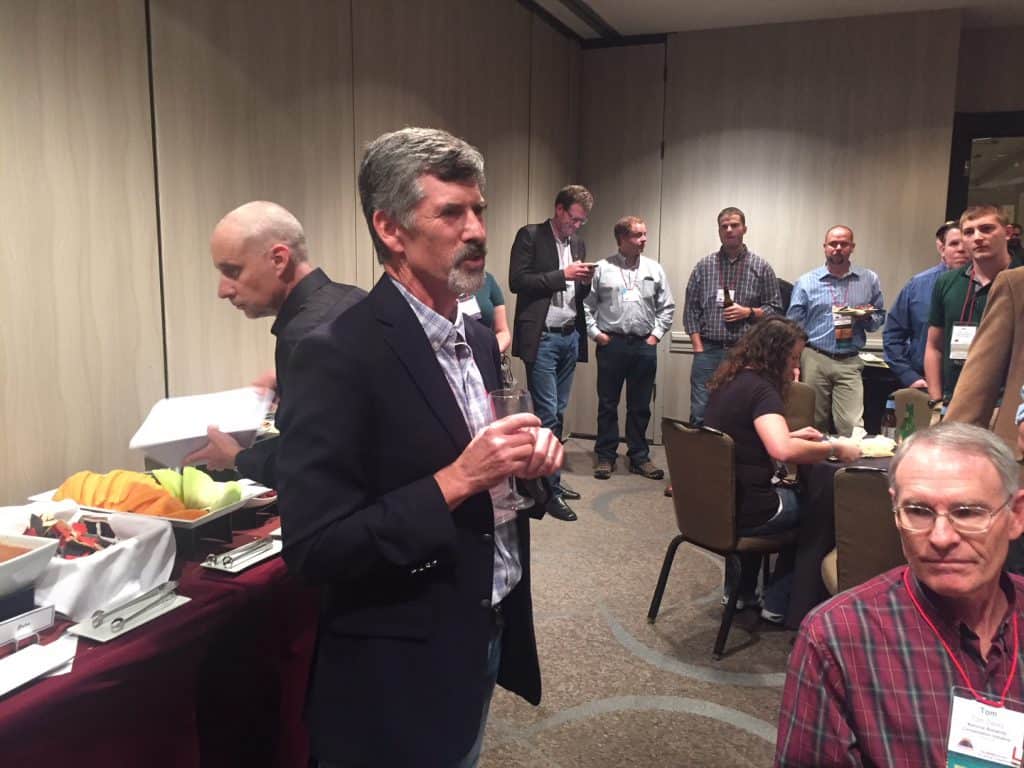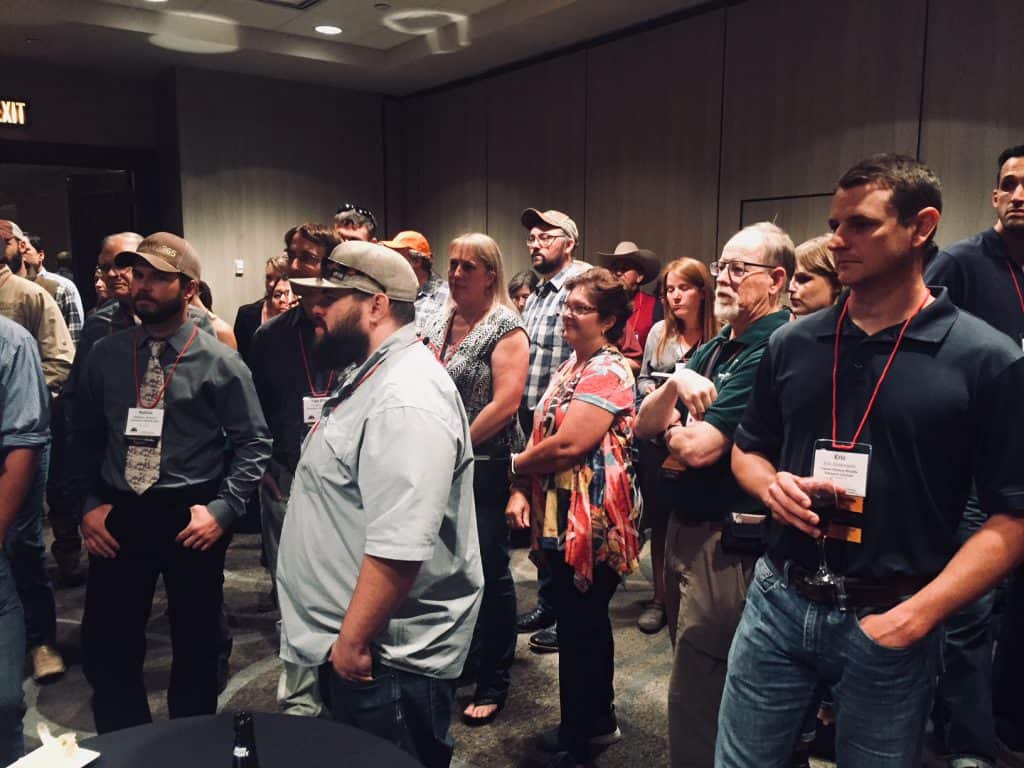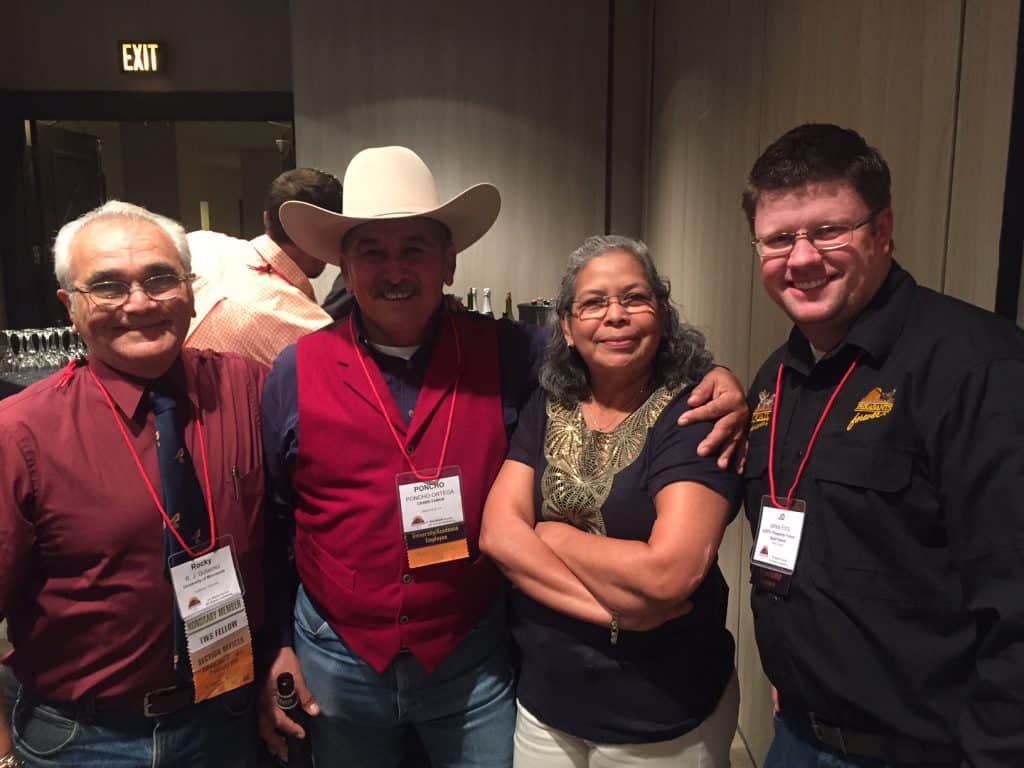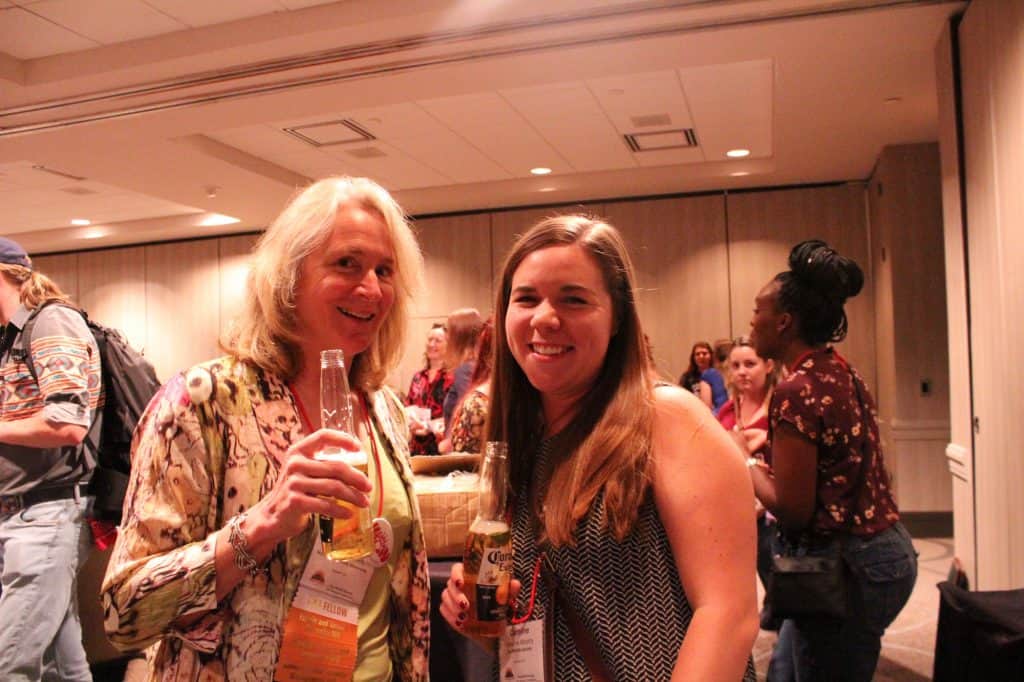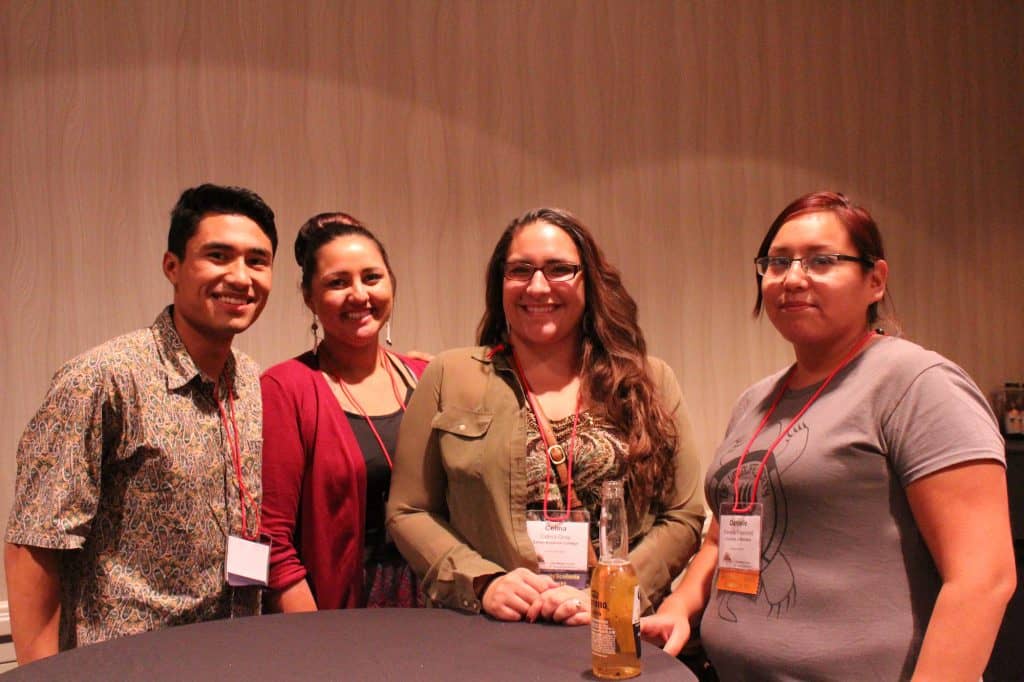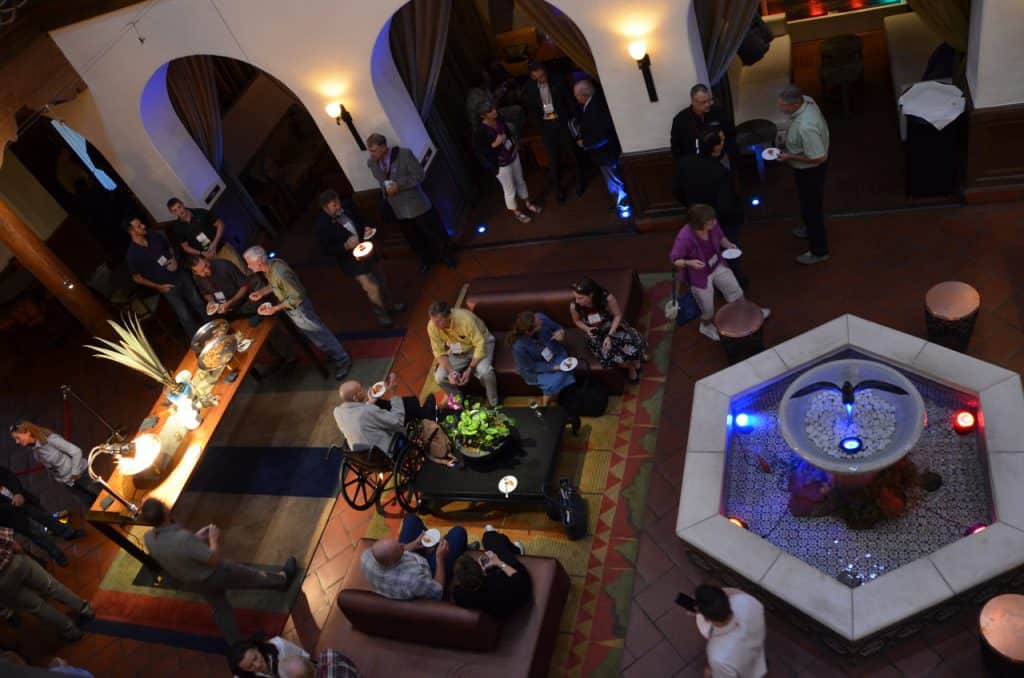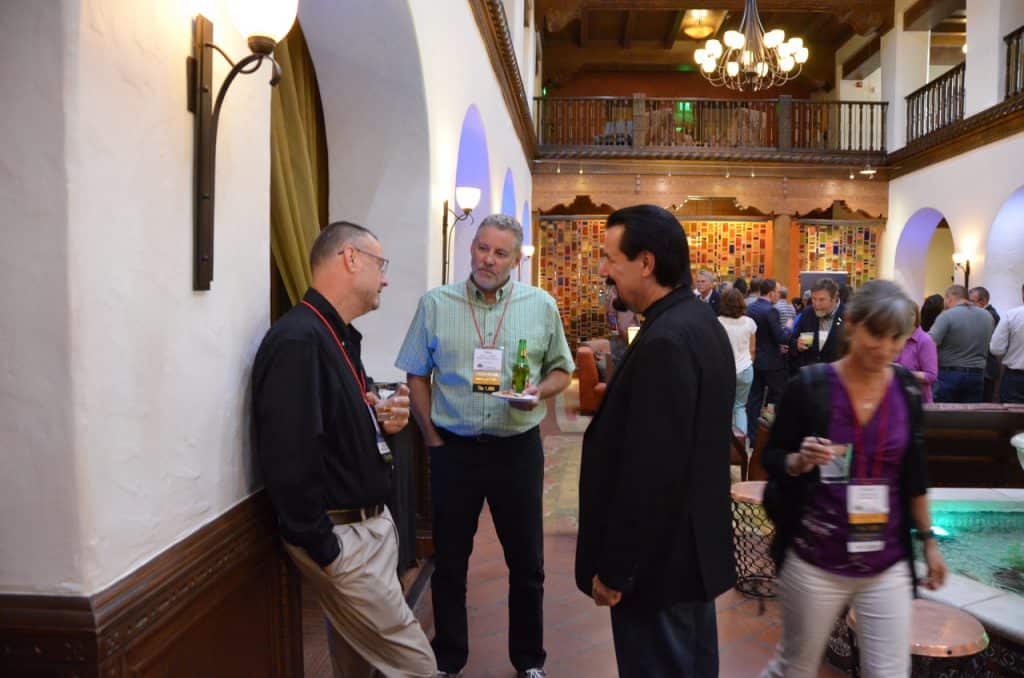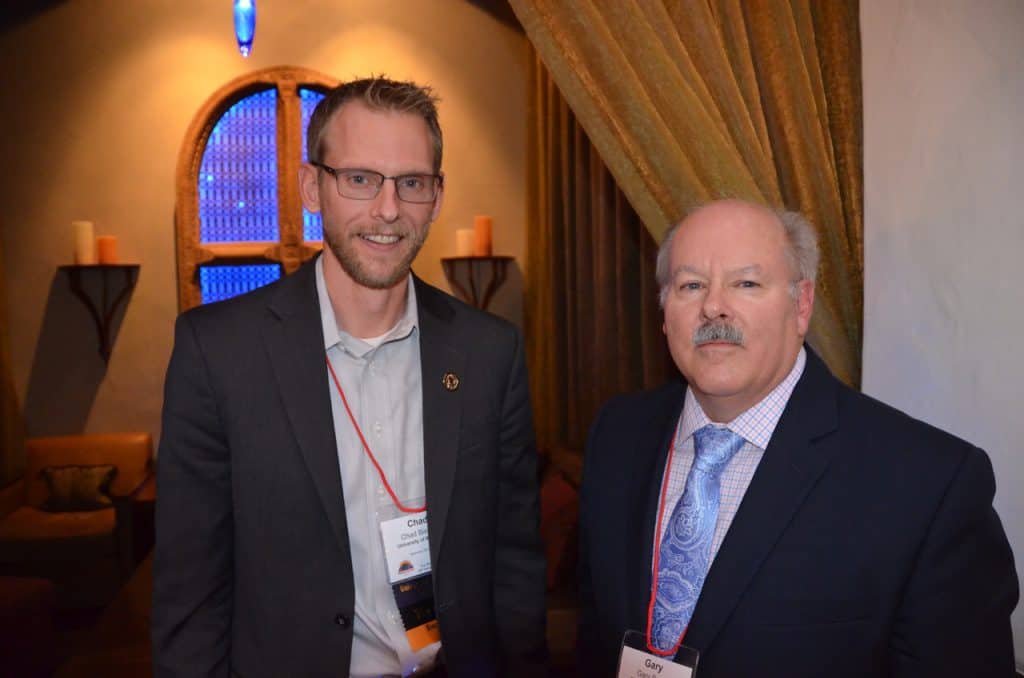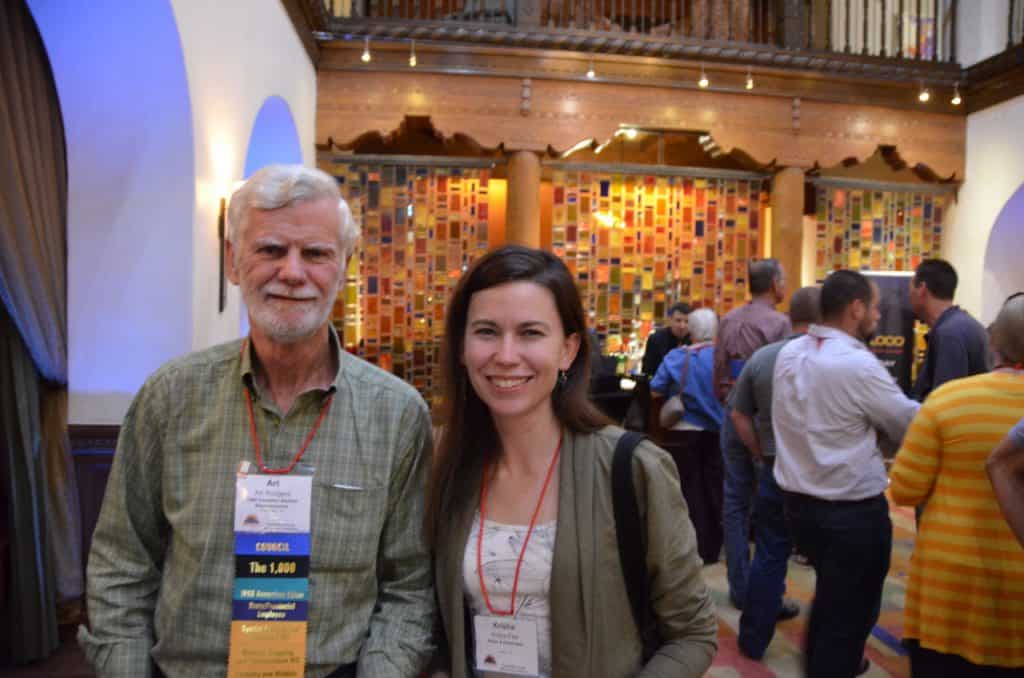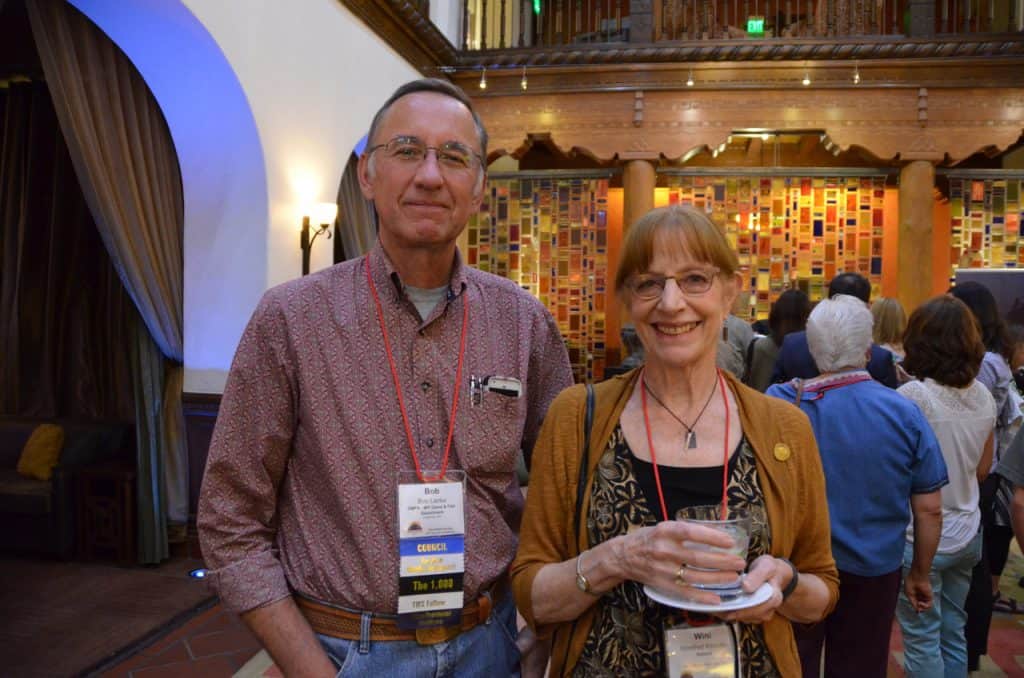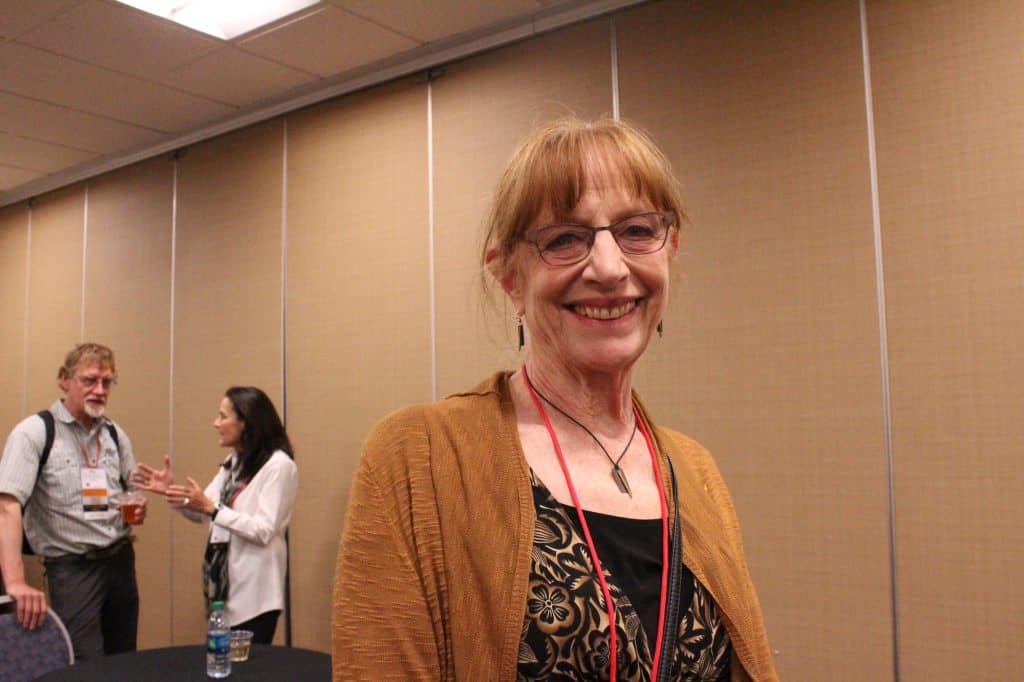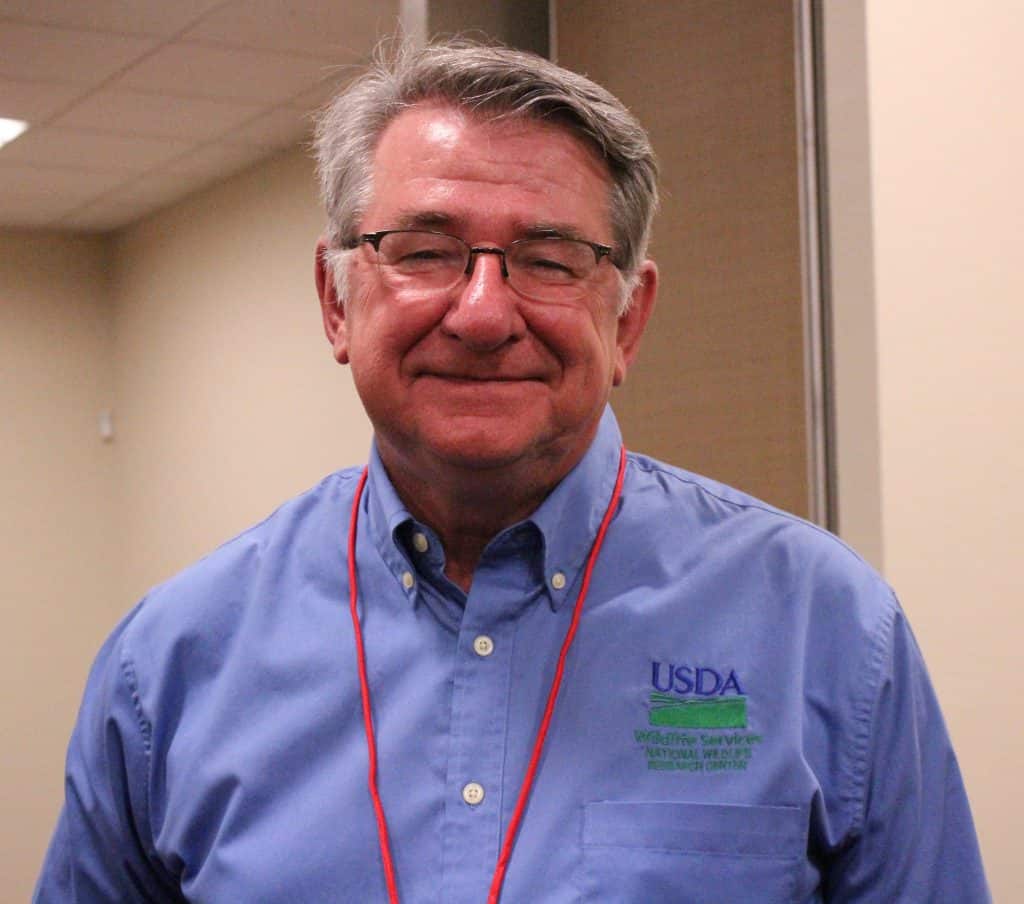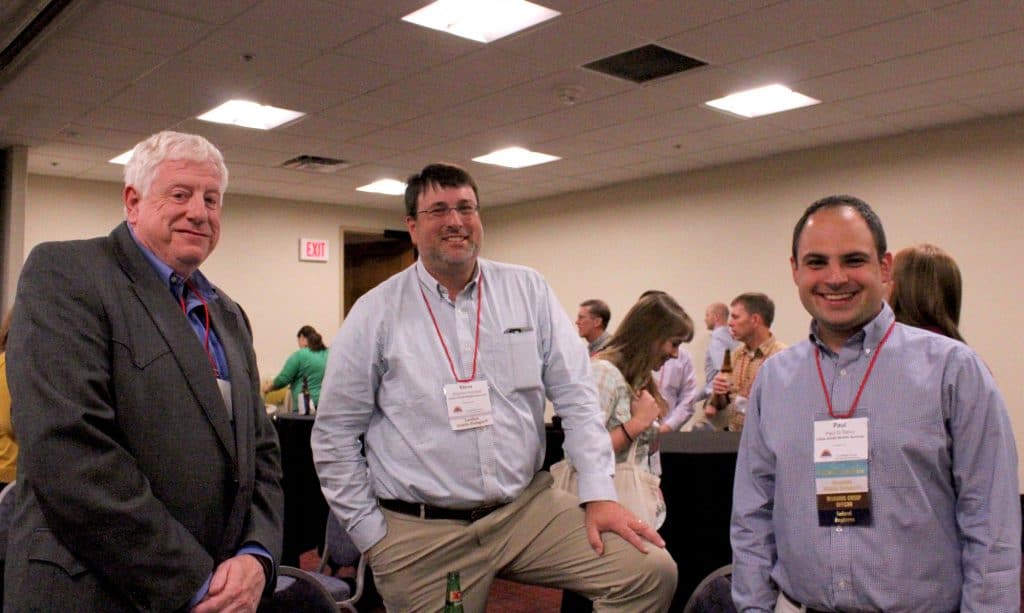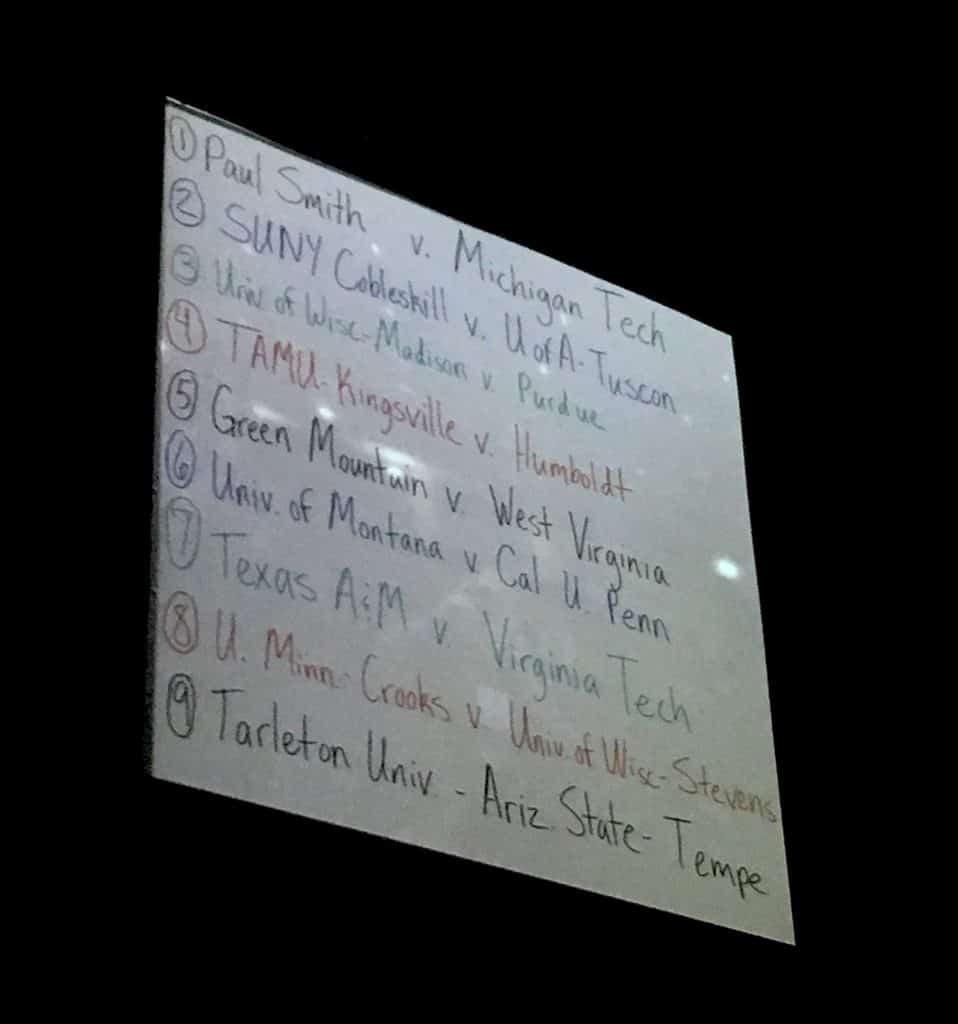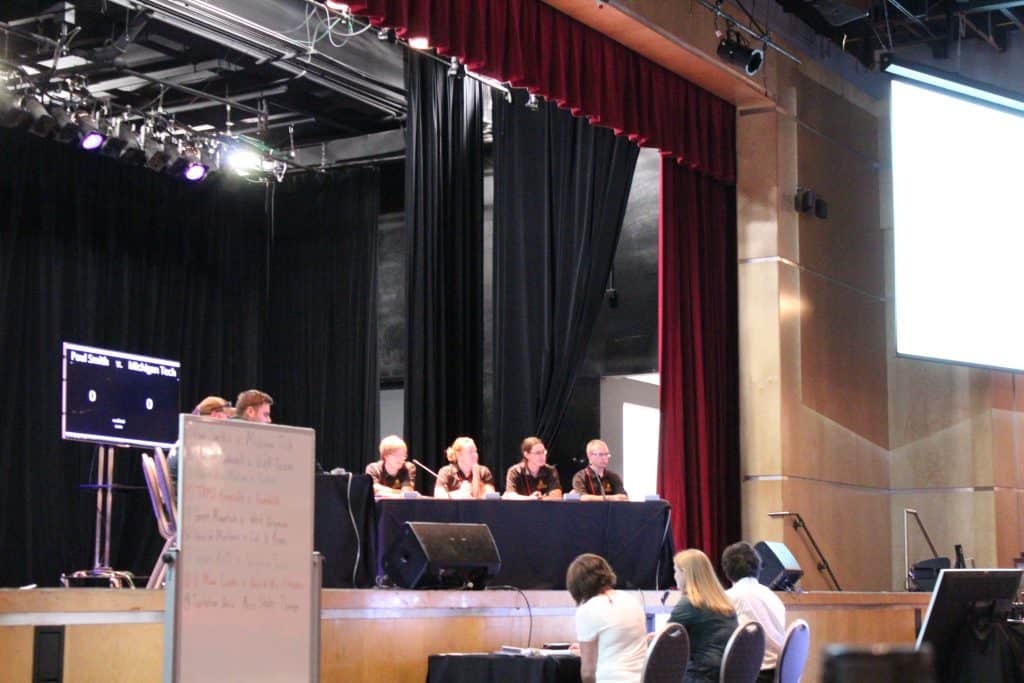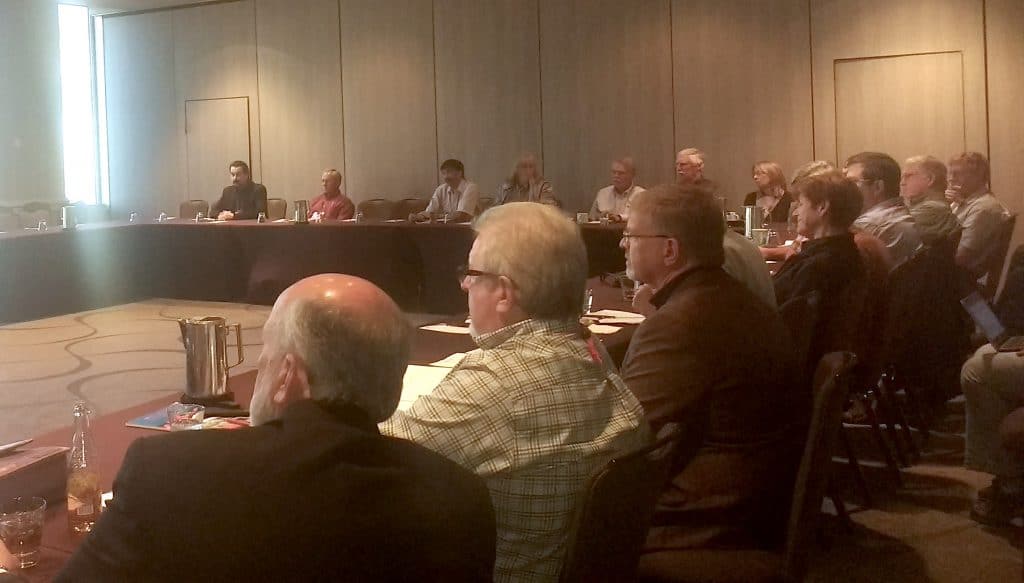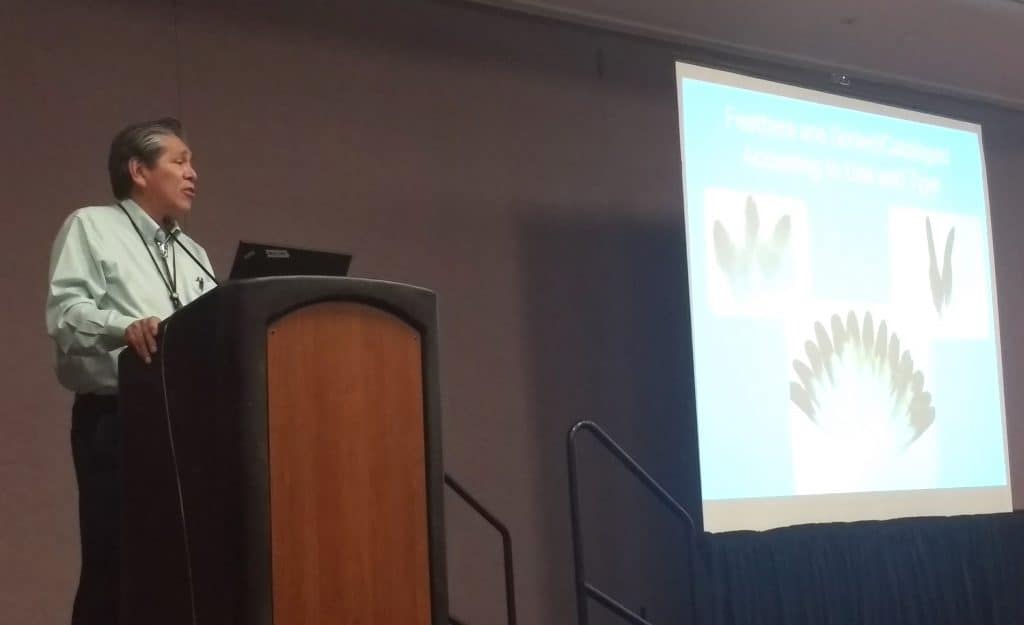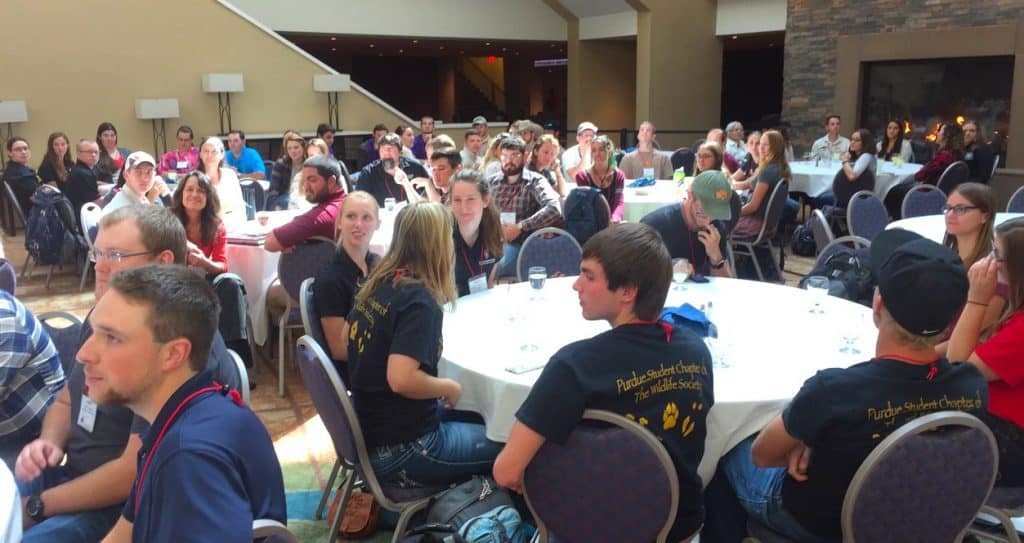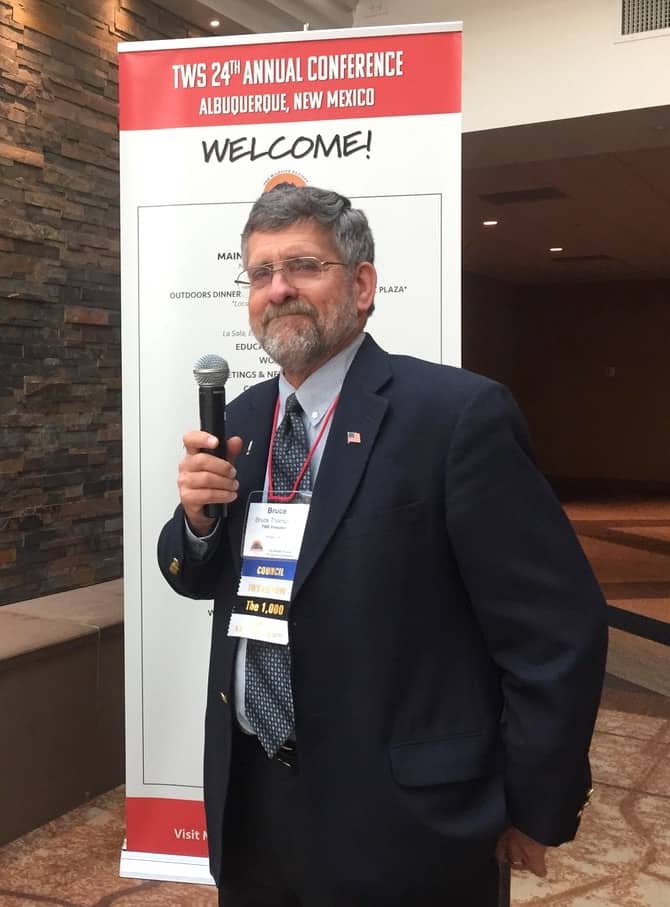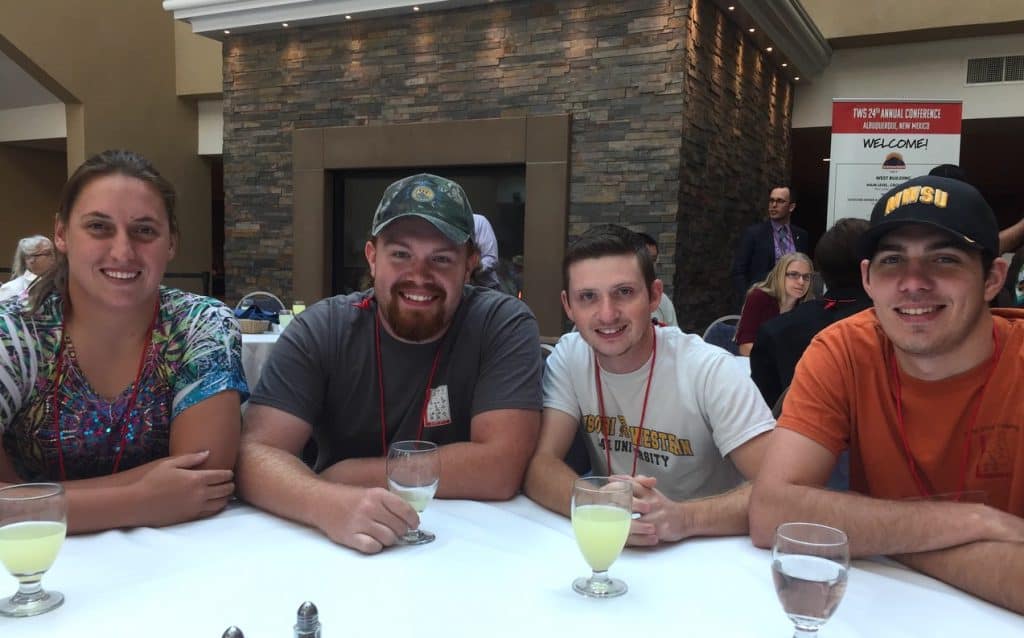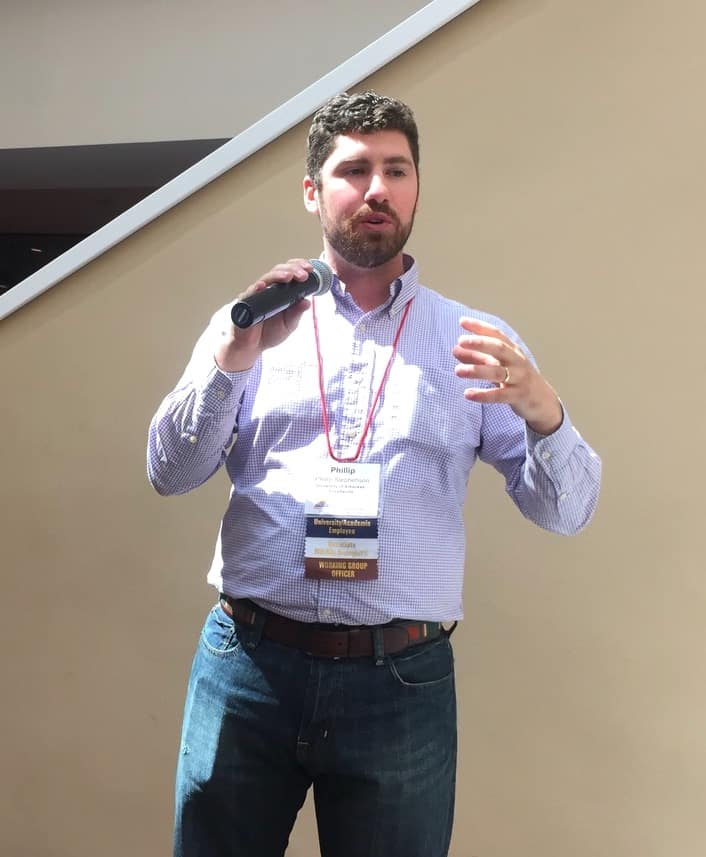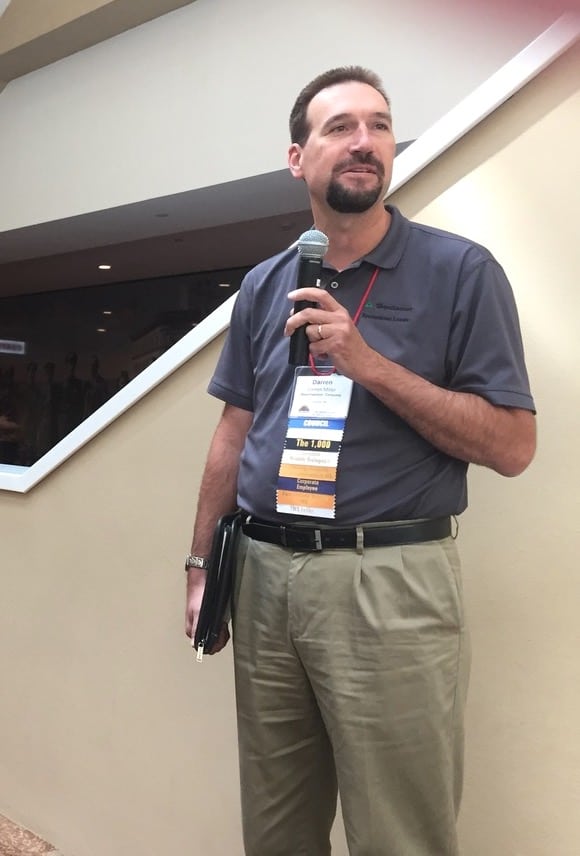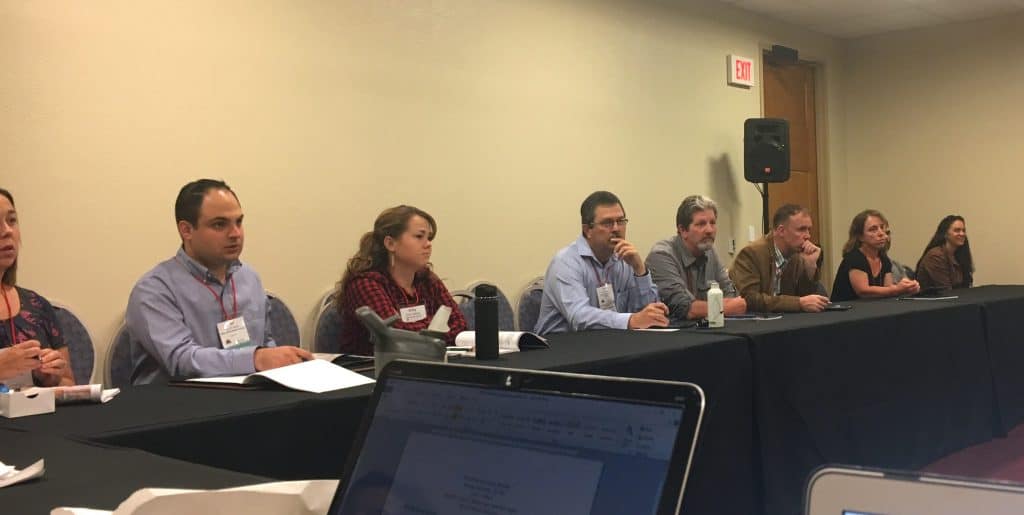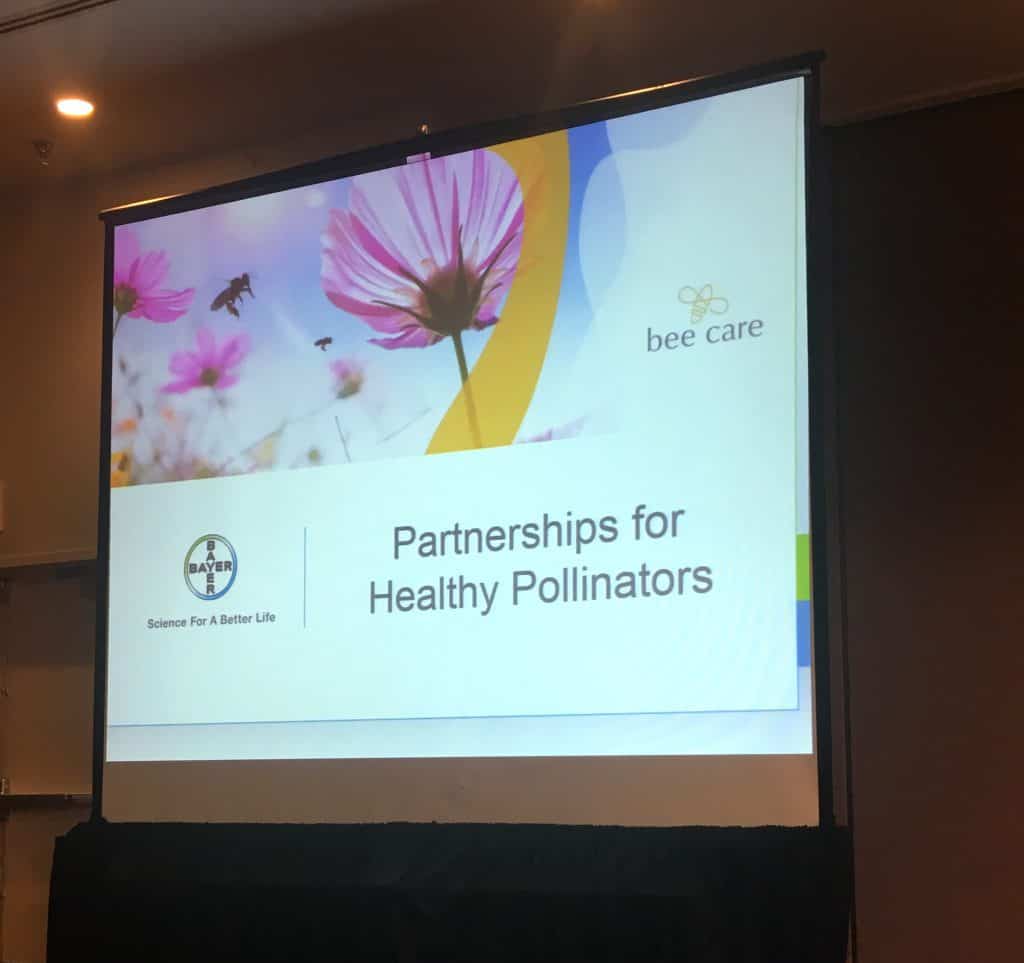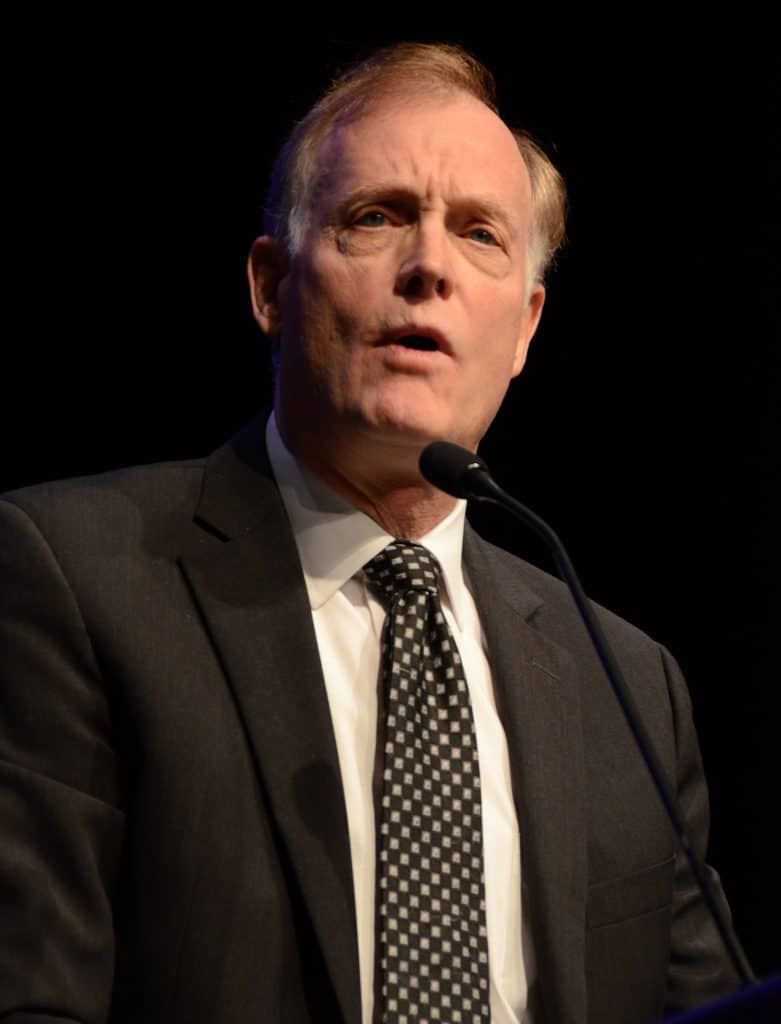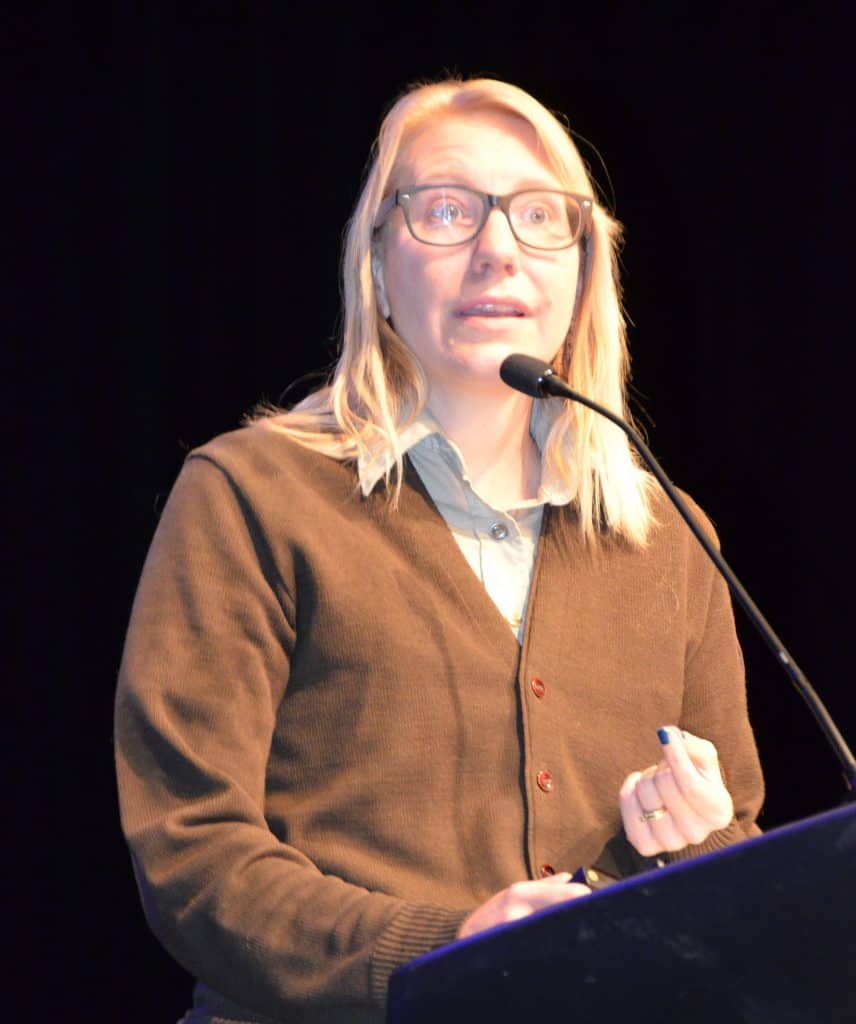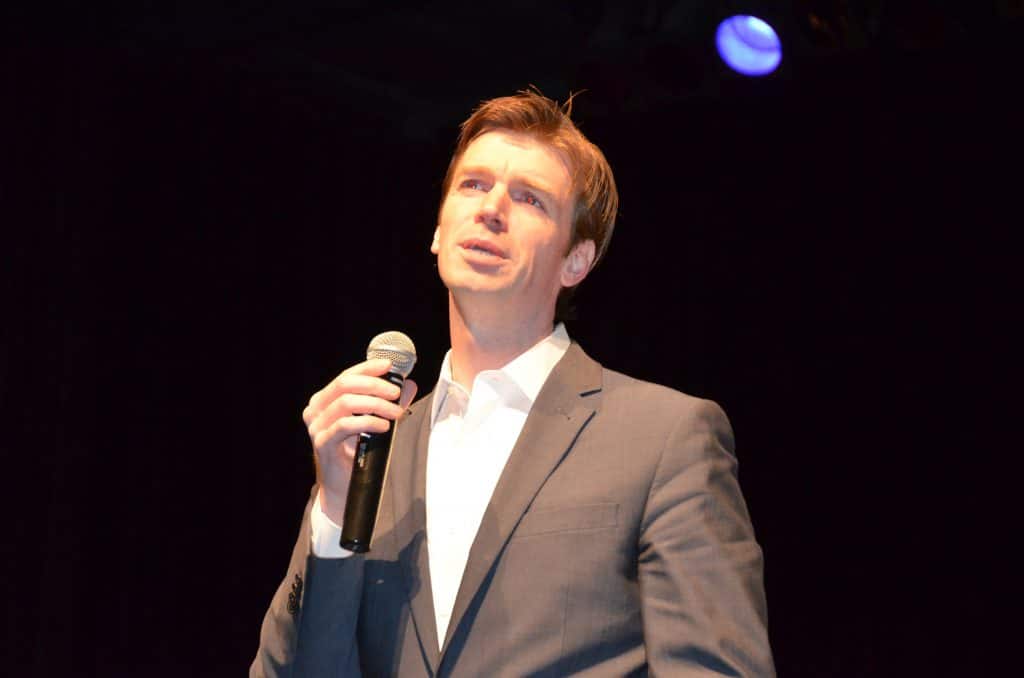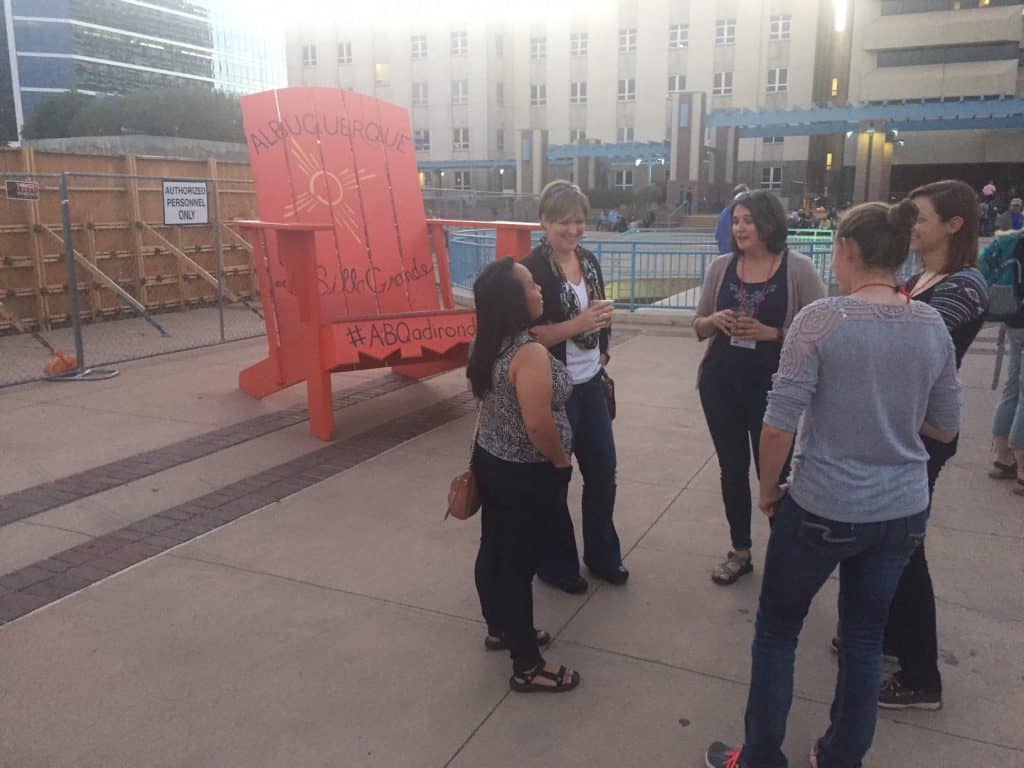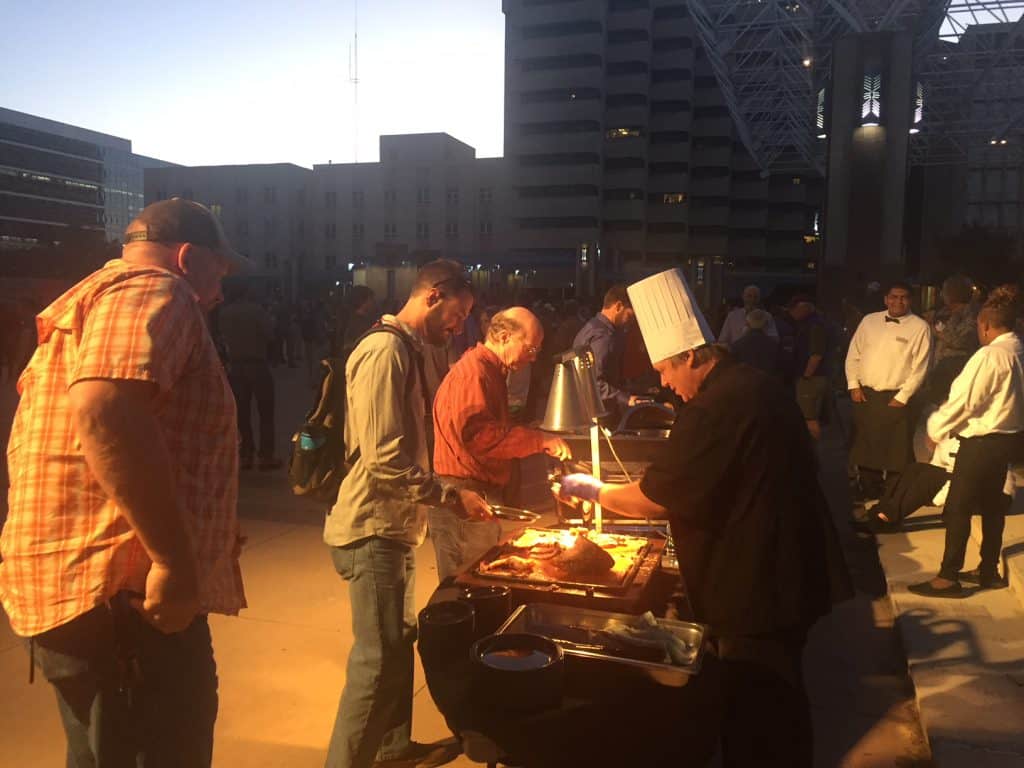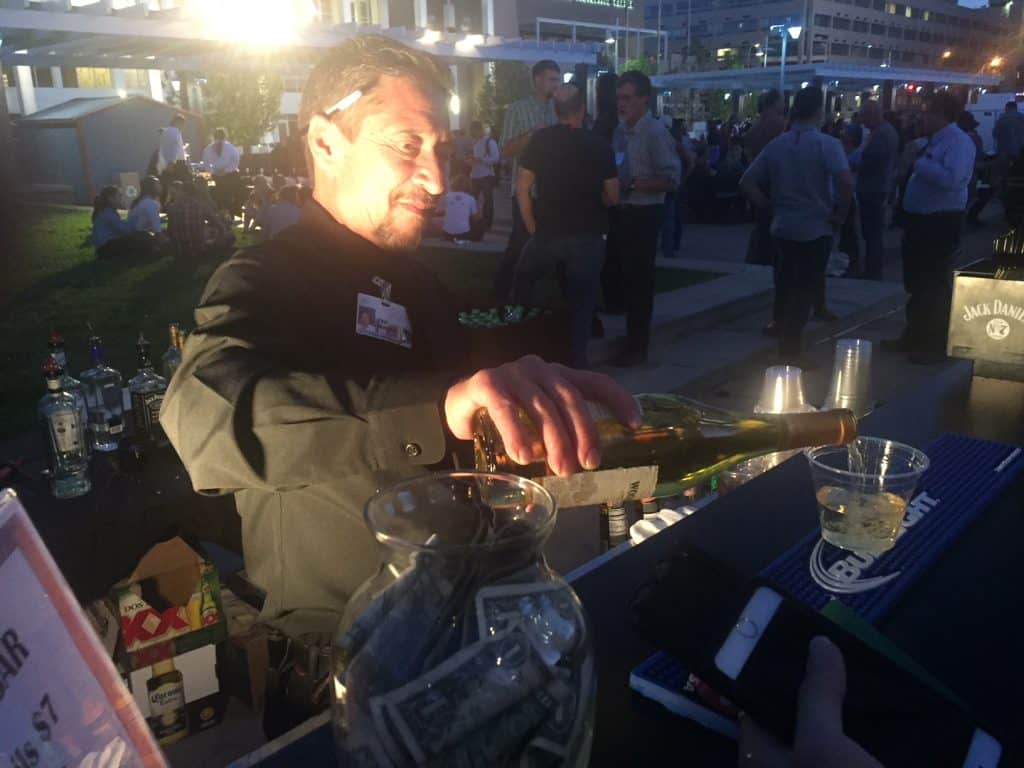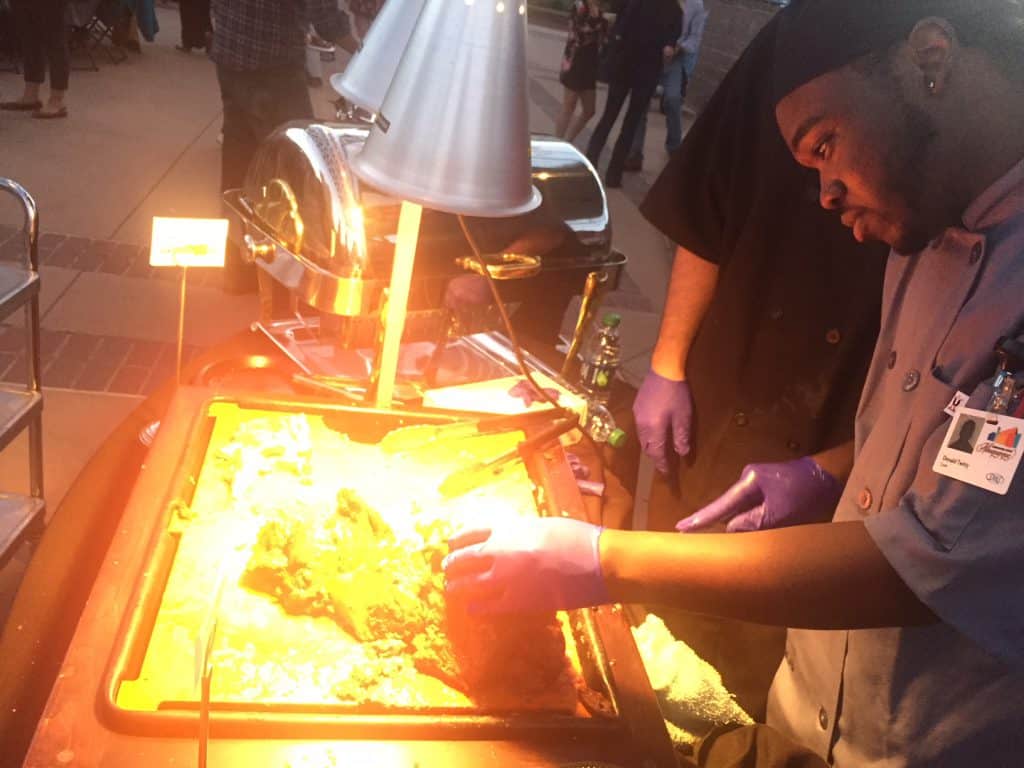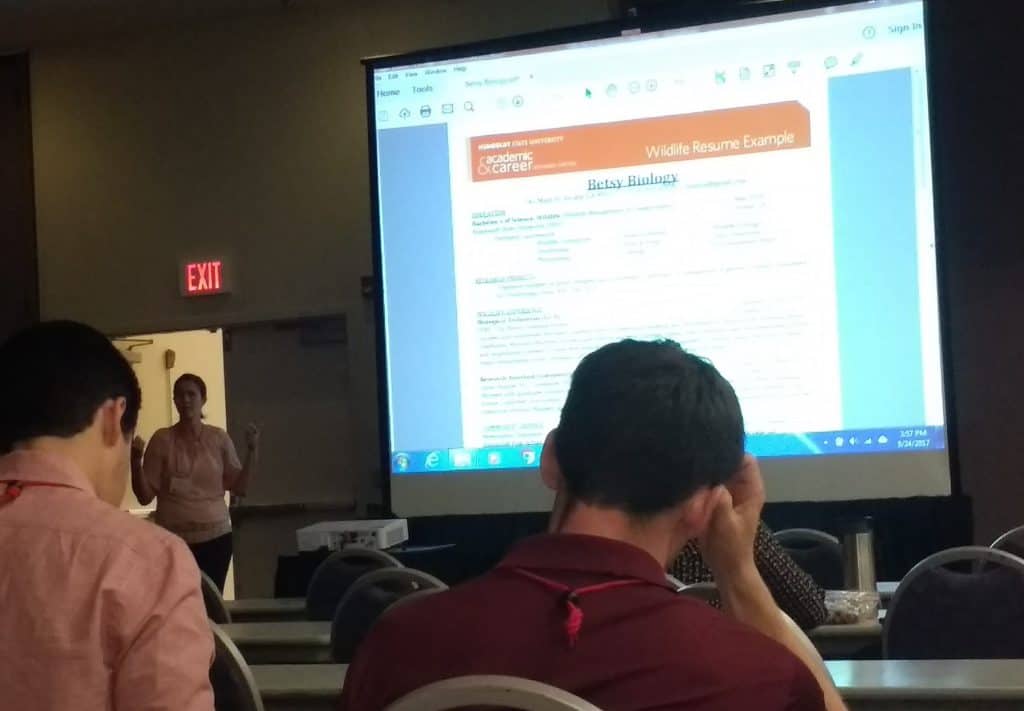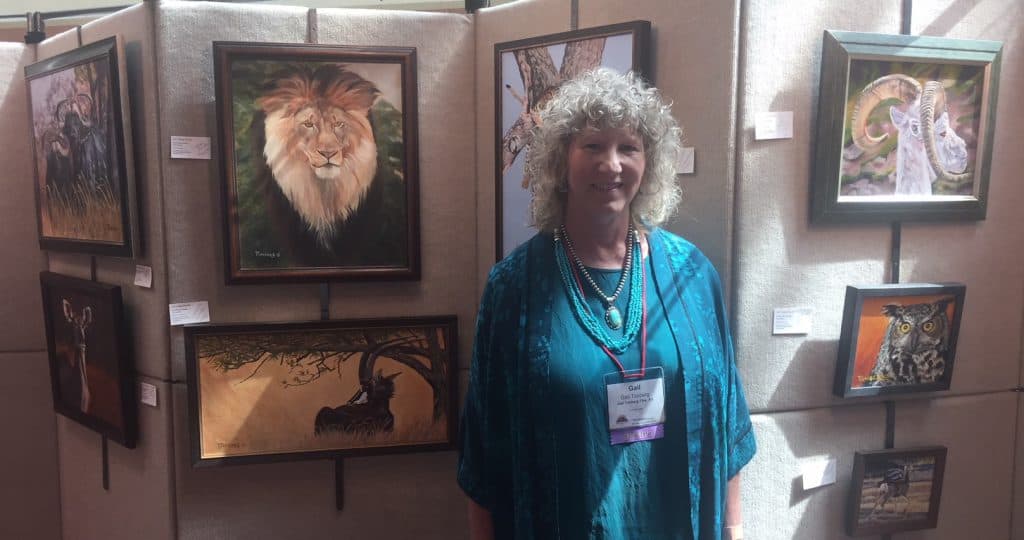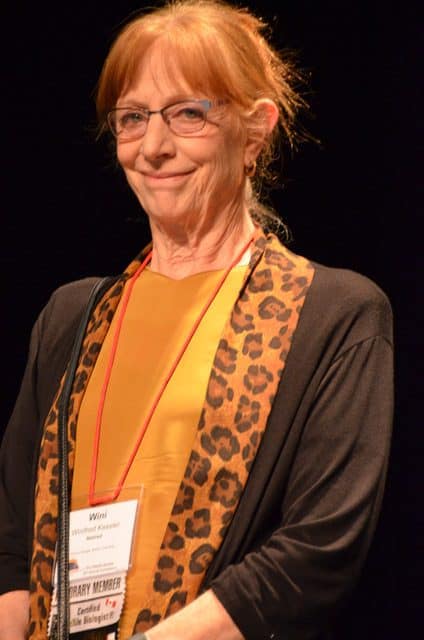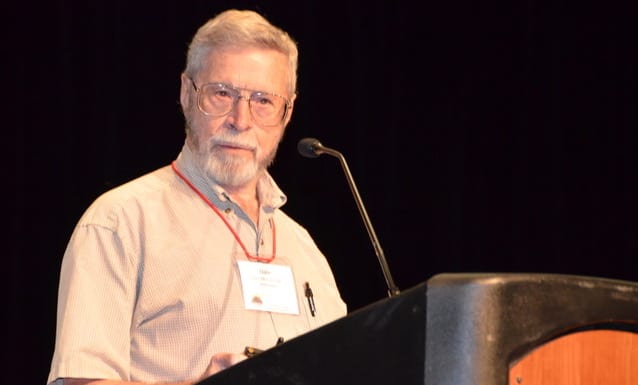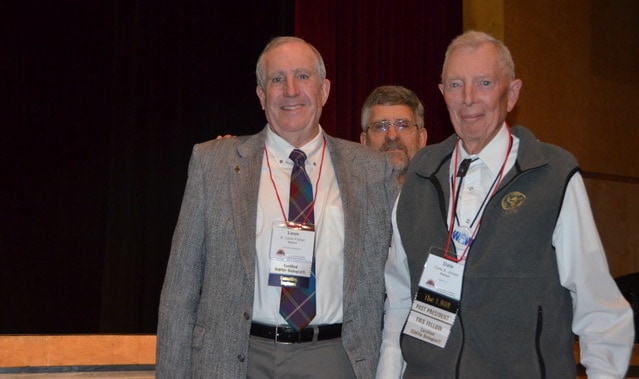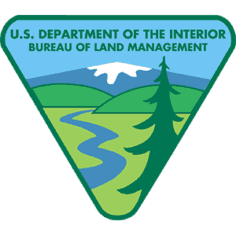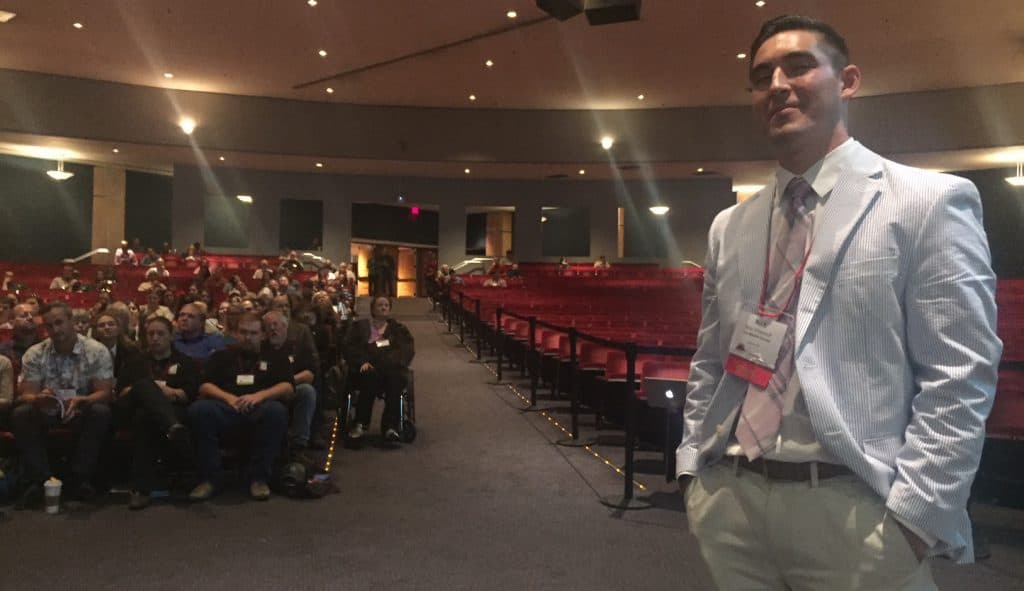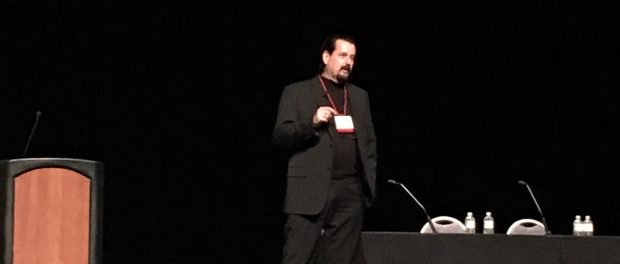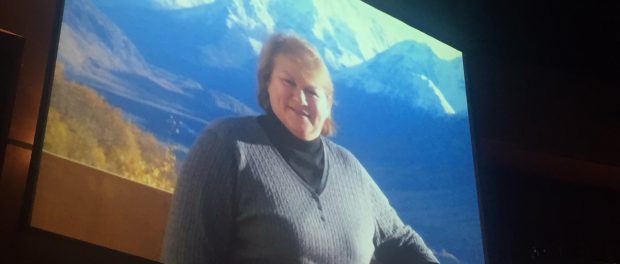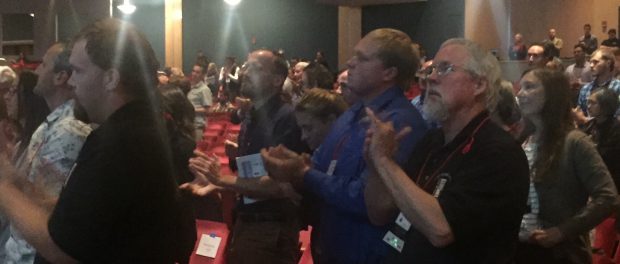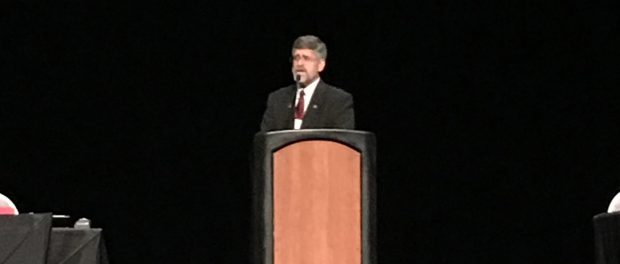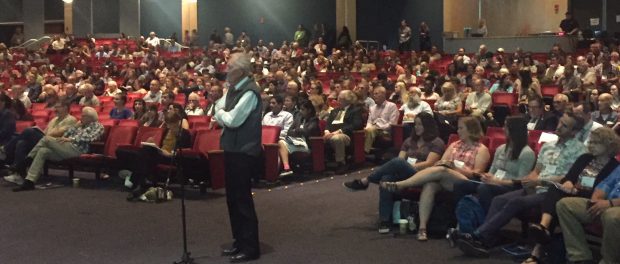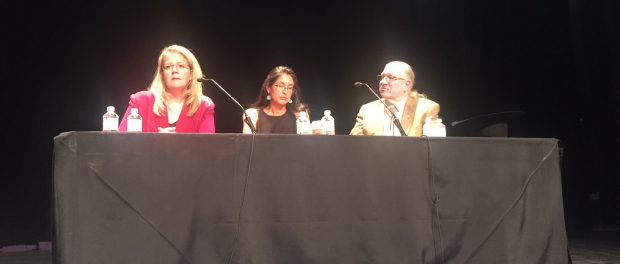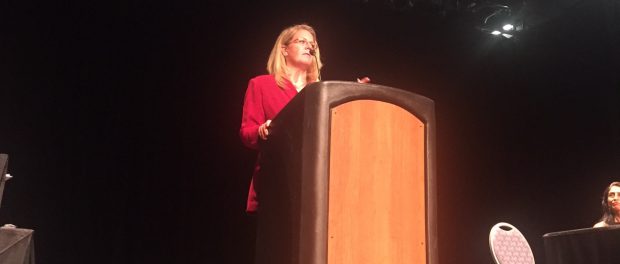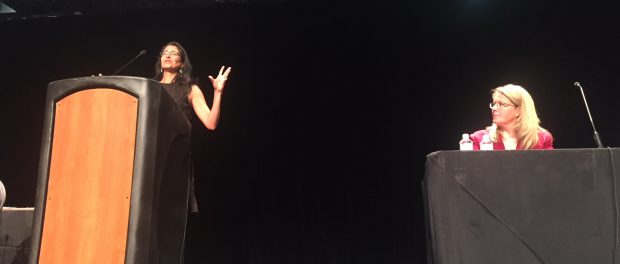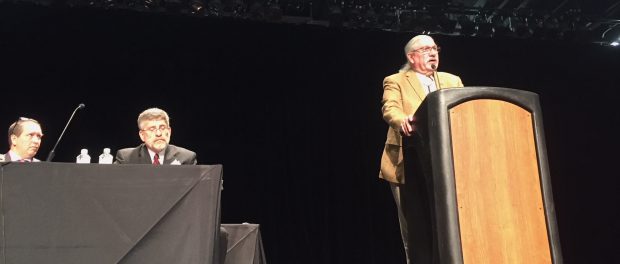Share this article
Live from Albuquerque!
Follow #TWS2017 live during our
24th Annual Conference in Albuquerque, NM!
WEDNESDAY, SEPTEMBER 27, 2017
8:00 p.m.
SOUTHWEST SENDOFF NETWORKING EVENT
TWS 24th Annual Conference attendees celebrate the end of a hugely successful conference in Albuquerque, New Mexico, with a Southwest sendoff!
2:45 p.m.
WILDLIFE PHOTO GALLERY & CONTEST WINNERS
Congratulations to all of this year’s Wildlife Photo Gallery & Contest winners, and a big thank you to all of those who submitted a photo! Look for #TWS2017 photo submissions in the eWildlifer as the Photo of the Week each week. Keep up the good work!
People’s Choice winner: Mark Watson
Best in Show: Kristina Harkins
2:00 p.m.
CAREERS WITH U.S. FOREST SERVICE
Why should a wildlife biologist work for the U.S. Forest Service?
“You get to work in the national forest system. There’s research and development, international programs where wildlife biologists participate. I’ve gotten to work on every type of landscape in the West with many iconic species – elk, deer, grizzly bear, spotted owls, goshawks, pollinators. The diversity of different interest areas you can work on is tremendous. It’s a great way to see the West or get to know new places. There’s a tremendous opportunity to work with different people, organizations and projects within the Forest Service.” – Brian Dykstra, regional wildlife program leader in the southwest region
12:15 p.m.
WILDLIFE FILMS SHOWCASE – DARLING IS BACK!: THE RESTORATION OF LAKE DARLING
What happens when an artificial lake named for conservation pioneer Ding Darling deteriorates? A small community unites in a $16 million restoration project to save Lake Darling. The film “Darling is Back!” tells the story.
11:20 a.m.
CAREERS WITH U.S. FISH AND WILDLIFE SERVICE
Five employees with the U.S. Fish and Wildlife Service are currently sharing their different experiences and insights from working in the federal sector with wildlife students interested in federal jobs. They’re describing their career paths, talking about lessons learned along the way and answering students’ questions on working for the agency.
“Be patient. Don’t pigeonhole yourself. Get a broad foundation, do a broad suite of jobs and gain a lot of skill sets. Definitely gain people skills. Don’t underestimate writing a cover letter and explain you’ll do something with your passion. Keep your chin up.” – Kelly VanBeek
KEYNOTE: BUSINESS FUNDAMENTALS FOR RESTORING NATURAL INFRASTRUCTURE
9:20 a.m.
Kathryn Spitznagle, Director of Global Sustainability, Caterpillar, Inc., Lynn Scarlett, Co-Chief, External Affairs Officer, The Nature Conservancy, and Tom Moorman, Chief Scientist, Ducks Unlimited share Wednesday’s keynote, “Business Fundamentals for Restoring Natural Infrastructure.”
There are already ways that these organizations have used green infrastructure including oyster reef restoration, dune restoration and sea marsh restoration, and bringing other natural features back to coastlines.
One challenge for businesses to be environmentally sustainable are regulation policies and “least cost” solutions. For example, Kathryn Spitznagle, the director of global sustainability at Caterpillar, Inc. said dredging is the first step in a lot of building infrastructure. The least cost option is to dump the dredge material right back in the water.
“Where we want to go with the Nature Conservancy and other partners is really to scale up these efforts and make them larger in themselves,” said Lynn Scarlet, the co-chief and external affairs officer with the Nature Conservancy. “We need to make natural solutions not an afterthought. Where resides our challenges are our opportunities.”
“What makes a lot more sense is to take that dredge material, cleanse it, transport it and reuse it,” she said.
Tom Moorman said policy is one of the most important components of implementing green infrastructure.
“Why natural infrastructure? The benefits are obvious. The more interesting thing to me becomes, how do we, from a business standpoint, develop models that lead to scaling up our work?”
“Aldo Leopold had it right. Our connection to the land is ultimately what matters.”
“Floodplain environmental policy in our country is kind of backward,” he said. “What if we had more thoughtful policy that did not incentivize development in the floodplain but incentivized green infrastructure?”
Lynn Scarlett says there are three keys to scaling up natural infrastructure: awareness, will and action.
“Sometimes a lower-cost option seems like the way to go, but really in the long term it’s not. [Realizing that] can really shift some of these scaling opportunities.”
Speakers said it’s important for scientists to be at the table in policymaking.
“How do we set the table for dialogs in national policymaking and think about solutions in coastal risk reduction and so forth? I think sometimes scientists have been nervous being at the table with policymakers, out of concern that it’s undermining objectivity or engaging them in advocacy.”- Lynn Scarlett
“Here we are at The Wildlife Society. What if The Wildlife Society took a message like this or had a session like this with engineers and economists? That’s two potentials. There are all kinds of folks who are part of the solution. Once that dialog starts you realize, hey, we have a lot of similarities here.”- Tom Moorman
9:00 a.m.
New TWS President John McDonald said his goal during his term will be to raise the profile of The Wildlife Society, and has a new TWS President Twitter account.
“That is my one challenge to our staff and to our officers and to our membership. Do what you can to raise our visibility on both local and national platforms.”
McDonald also announced the theme for next year’s conference, recognizing and sustaining conservation successes.
“In my lifetime, we’ve made a lot of gains on the conservation front. I’m 50 years old. I was around the last time the Cuyahoga River, in Cleveland where we’re going to be next year, caught fire. We’ve made incredible progress. … I’m really hoping that we can take a moment next year, our 25th conference, to celebrate all the successes we’ve made. … Not to dismiss the challenges and threats that we face but we’ve made progress on a lot of fronts.”
8:45 a.m.
Passing the gavel to John McDonald, our new President, and thanking Immediate Past President Bruce Thompson for an amazing year!
“Many of you now and any of you can be leaders in The Wildlife Society.”
“I am quite certain that you are in the presence of past, current and future leaders of The Wildlife Society.” – outgoing TWS President Bruce Thompson
TUESDAY, SEPTEMBER 26, 2017
QUIZ BOWL: FINAL FOUR!
7:00 p.m.
Students from the University of Georgia and and Purdue University square off at the Quiz Bowl championship Monday night.
Judges confirm an answer after a student challenge at the Quiz Bowl championship Tuesday night.
And the University of Georgia’s done it again! With a final score of 55 – 20, they’ve clung to the quiz bowl championship yet another year! Congratulations, University of Georgia!
Students from the University of Georgia, in red, and Purdue, in yellow, shake hands after the University of Georgia team won the Quiz Bowl championship Monday night.
6:15 p.m.
This year’s quiz bowl championship is now underway in the Albuquerque Convention Center’s Kiva auditorium!
California University of Pennsylvania just beat Arizona State University 20-10 to claim third place.
Last year’s third place winners, Purdue University, are now taking on the reigning champions, University of Georgia, in the final battle for the championship title!
4:15 p.m.
SESSIONS 69: INVASIVE SPEICES
Monitoring the Eradication of European Mouflon Sheep from the Kahuku Unit of Hawai’I Volcanoes National Park
All mammals on legs in Hawaii are nonnative, according to presenter Steven Hess. He studied the eradication of the nonnative European mouflon sheep in the Kahuku Unit of Hawai’I Volcanoes National Park. The sheep, native to the Mediterranean islands, kill native plants and trees and transmit diseases to other animals, he said. In order to monitor the eradication, Hess and his colleagues completed aerial surveys, on-the-ground surveys and collected camera trap data. Hess said more rams were taken out of the population than females, likely because people wanted trophies. He also said aerial control took out the most sheep compared with volunteer programs, on the ground control, control with dogs and others. Methods that didn’t work include baiting and trapping,
3:45 p.m.
MEMBERS ACTIVITY CENTER
2:30 p.m.
READY SET GO! FEDERAL EMPLOYMENT WORKSHOP
The Ready Set Go! Federal Employment Workshop drew a packed room Tuesday afternoon as interested wildlifers came for tips on how to land a job in a federal agency.
“I think it’s a wonderful time for you to be looking for employment,” said Bobbi Barrera, deputy director of the wildlife, fish and rare plants program for the U.S. Forest Service in Albuquerque. By 2020, she said, two-thirds of the federal workforce will be eligible for retirement.
“Don’t take the federal application process lightly,” she said. “Being here is a great start for figuring out how to make your way through the process.”
Bill Quinn, a professor at St. Edward’s University, urged students to start building their skills, ftom GIS experience to management, before graduation.
“It’s never, ever too early to pick up management skills and communications skills,” he said.
Quinn warned that broad degree programs, like environmental science or biology, may not offer the specialized skills required for natural resource jobs.
“For some specific jobs there are specific requirements,” he said.
Sandy Boyce, national wildlife ecologist for the Forest Service, urged the crowd to follow their passions. His own interest in raptors started as a child caring for a pet kestrel owned by his neighbor in Berkeley, Calif., the famous environmentalist and former director of the Sierra Club, David Brower.
“You need to go with your passion,” he said. “You’re going to have victories and you’re going to have defeats in your career. Having passion helps you through the defeats and helps you enjoy the victories.”
1:10 p.m.
CAREERS WITH WILDLIFE SERVICES
Ever considered having a career at USDA wildlife services? At the Careers with Wildlife Services Event, there are representatives from different positions and areas of the agency who are sharing what they do and some of their other thoughts.
“As you’re in school now, get involved in internships,” advised Brian Archuleta, the district supervisor of the southeast New Mexico branch of USDA. “It delayed my graduation, but it guaranteed me a job when I got out of college.”
Erin Harper, an early career professional at the USDA-APHIS Wildlife Services National Wildlife Research Center, got her position after watching someone present at a conference about wild pig management and human dimentions and reaching out to them via email for funding.
“When you’re at conferences, don’t be afraid to go up to and talk to people,” she said. “They ma not have funding. I got very lucky. They may not have something right now, but they may have something in the future.”
Alan May, the Wildlife Services State Director in New Mexico, has been working with Wildlife Services for about 34 years.
“It’s all about helping people try to resolve problems,” he said.
12:00 p.m.
WILDLIFE FILMS SHOWCASE:
AMERICA’S DARLING: THE STORY OF JAY N. ‘DING’ DARLING
It’s kind of a magical name, “Ding” Darling. And Darling is a pretty magical man. The wildlife film showcase is featuring the film: “America’s Darling: The Story of J N. ‘Ding’ Darling.” The film depicts Darling’s life as an American cartoonist and conservationist. Darling had a particular love for birds and other wildlife. But that’s not the important thing, he said. The important thing is that they are the “delicate indicators of the future.”
11:30 a.m.
CONSERVATION AFFAIRS NETWORK MEETING
Representatives from TWS’ many units across the continent are convening at the Conservation Affairs Network meeting and sharing their updates right now. Since its establishment in 2014, the Conservation Affairs Network has been collaborating and communicating to unite and engage wildlife professionals’ efforts to advance wildlife conservation policy issues at the national, regional, and local levels.
10:30 a.m.
CAREERS WITH BUREAU OF LAND MANAGEMENT
The Wildlife Society’s newest premier partner, The Bureau of Land Management manages almost 250 million acres of land, mostly on the west coast. At the Careers With U.S. Department of the Interior Bureau of Land Management, individuals working with BLM provided some advice for students and other individuals.
“It was quite an education coming out of college where they taught you to manage for individual species, but they never taught you there would be conflicting uses on lands,” said John Sherman, the wildlife program lead for BLM in New Mexico.
“When you work for the BLM, you quickly learn there are conflicting uses. It makes things a little less tedious, less dull. Nothing is every run of the mill.”
Pamela Herrera-Olivias, a BLM wildlife management biologist at the Taos Field Office said she had some challenges throughout her career balancing work and personal life.
“Since being there, being a mother and working full-time is very challenging,” she said. “BLM gave me a sense of belonging and a sense of family.”
One thing they allowed her to do was telework when she was raising her children.
“I think themes important thing for people looking for jobs in the federal government and BLM in particular is to pay attention to what works,” said Ty Allen, the assistant field manager at the BLM Carlsbad office. “Pay attention to how people interact. Really take advantage of it.”
“Be flexible in what you’re willing to do, but also where you’re willing to live,” advised Brad Jost, with the BLM’s Wyoming State Office.
“Many people hold out for their one perfect job and one perfect place. I think you gain a whole lot of experience and can take advantage of opportunities if you take a hob in a place you’re not that excited about or familiar with, and watch the doors open from there.”
Two important things in being successful working with BLM are partnerships and friendship, said Jeff Walsh, a senior wildlife biologist in the BLM’s Washington office.
“Partnerships are so very important for us with very little staff and very little money, and we just meet to partner up to make what is mutually beneficial projects happen on the ground.”
TUESDAY PLENARY: PARADIGM SHIFTS, DIVERSITY AND INCLUSION, & FEET IN SEVERAL WORLDS
9:25 a.m.
Scott Aikin, the National Native American Programs Coordinator with USFWS, is providing his insight into the wildlife profession as a Potawatomi tribe member.
Aiken suggested saying to others: “I want to invite your perspective in and be transformed by hearing that, and ask you to be transformed by hearing my position.”
Seeing a passenger pigeon exhibit at the National History Museum in D.C. urged Aikin to want to give a voice to wildlife that don’t have one.
“We come here today in an environment that is thankfully so rich in diversity,” Aikin said.
9:05 a.m.
Jennifer Malpass, a biologist with the USGS bird banding lab is discussing how wildlife conservation has changed over time, no longer “your grandfather’s wildlife conservation.
Hunters were the first stakeholders, Malpass said. “We must adapt to maintain relevance,” she said.
Urban wildlife refuges are one way the field of wildlife biology is adapting to changing times, since more U.S. citizens live in cities now, Malpass said.
However, Malpass said there are ways we still need to adapt to society today. “We may have changed the name from game management, but to much of the public we’re still too focused on hunters and hunted species,” she said.
8:45 a.m.
Nailini Nadkarni, with the University of Utah, is starting this morning’s plenary urging attendees to think of the idea of “tapestry thinking,” especially regarding tree and forests.
“If we can weave the recreational values into the ecological values of trees and forests, we might move forward with forest conservation,” Nadkarni said.
Nature and conservation can even benefit people in prisons. Incarcerated men who watched nature videos committed 26 percent fewer violent infractions than their fellow inmates, Nadkarni said.
“Not all of these projects have to be gigantic,” she said. Nadkarni said even getting a manicure with trees on them or sharing information about rainforests with people next to her on planes can start conversations about conservation.
MONDAY, SEPTEMBER 25, 2017
8:30 p.m.
CAESAR KLEBERG WILDLIFE RESEARCH INSTITUTE RECEPTION
David Hewitt, director of the Caesar Kleberg Wildlife Research Center, speaks to the crowd at the center’s reception at the Hyatt.
7:30 p.m.
WOMEN OF WILDLIFE (WOW) NETWORKING EVENT
Tons of women — and men — are filling up the the Women Of Wildlife reception this evening. Students are networking with professionals and having great conversation over drinks.
“The networking aspect is the most important part,” said Claire Crow, with the International Wildlife Management and Ethnic and Gender Diversity Working Groups.
“I’ve been coming to these since I first heard of these a few years back. It’s an awesome connect with the Ethnic and Gender Diversity Working Group’s vision and mission.” This year’s TWS winner Wini Kessler even received a roaring round of applause upon entering the reception.
6:30 p.m.
THE 1,000 RECEPTION
Members of The 1,000 gather for The 1,000 reception at the Hotel Andaluz, a chance to meet personally with TWS members who commit to giving $100 each year to the Society.
TWS CEO Ed Thompson meets with members of The 1,000, the group of TWS members who give at least $100 annually to the Society.
Chad Bishop and former TWS President Gary Potts.
TWS Council member Art Rodgers and Krisha Faw.
TWS Council Representative Bob Lanka and this year’s Aldo Leopold Memorial Award recipient Wini Kessler
Members of The 1,000 gathered Monday evening for a reception at the Hotel Andaluz, down the street from the convention center. The reception was a chance to recognize this group of TWS members, who pledge to commit at least $100 annually to the Society.
“The reception is our annual opportunity to face-to-face thank these people for all they do for The Wildlife Society,” said TWS CEO Ed Thompson.
“It takes an extra layer of generosity and loyalty to make a contribution of $100 or more. We’ve got many in here who donate $1,000 or more. They do it because they care about the organization. They do it because they want to see us be able to expedite benefits and services, to get more people into the organization. This is really our chance to thank them. We try to do that in writing during the year but that’s not as personal. We want to make sure they know they’re appreciated and are making a difference for the Society.”
The gathering included many long-time members who felt The Wildlife Society was instrumental in their career.
“From the beginning, when I first became a student, The Wildlife Society was instrumental to my professional development,” said Chad Bishop. “I got asked to give and I didn’t hesitate too much because of that long association with TWS. I felt it’s been integral to my professional development.”
“I joined because I believe in this organization,” said Wini Kessler, recipient of this year’s Aldo Leopold Memorial Award. “I really support this organization. I think it’s important particularly for the leadership of the organization to step up and set an example.”
6:20 p.m.
ALDO LEOPOLD RECEPTION
5:15 p.m.
NATIONAL WILDLIFE RESEARCH CENTER NETWORKING EVENT
The National Wildlife Research Center is hosting an open networking event this evening at the annual conference. Wildlifers from diverse backgrounds and levels of experience are welcome to meet biologists who work across the country for the organization.
“Being aggressive selling yourself goes a long way,” said Larry Clark, director of the National Wildlife Research Center, an agency that aims to make decisions that tackle complex human-wildlife conflicts and benefit the people and animals involved.
“If you just send in your application, you’re one of thousands. It’s like the NBA lottery. If people can put a face and get some personal connection with your skill sets, it’s way better. That’s why these networking events are important.”
The National Wildlife Research Center is a contributor to this year’s Annual Conference and supports the Native American wildlife management working group through conference travel grants, he said.
QUIZ BOWL: PRELIMINARY ROUNDS
4:45 p.m.
It’s a close match right now between Texas A&M and Virginia Tech. Texas A&M just showed their knowledge of New Mexico’s state reptile, the New Mexico whiptail.
3:45 p.m.
Purdue just moved on to the next round.
Next up: Texas A&M University Kingsville versus Humboldt State University.
3:30 p.m.
Do you know if sharks have ribs? The University of Arizona Tucson knew that they don’t at this afternoon’s preliminary round of the Quiz Bowl competition. They’re currently up against SUNY Cobleskill.
One question that stumped both teams:
What’s the western-most U.S. state where white-nose syndrome was confirmed?
Answer: Washington
3:00p.m.
The first teams participating at the preliminary rounds are Paul Smith versus Michigan Tech. So far, Michigan Tech is quickly pulling ahead. Among the questions they’ve answered so far:
What is the common name for New Mexican’s official state amphibian?
Answer: The spadefoot toad
What is the meaning of leucocephalus?
Answer: White headed
What is the term for human subsidized resources?
Answer: anthropogenic resources
2:45 p.m.
TWS HERITAGE COMMITTEE & RETIREES MEETING
The TWS Heritage Committee, which consists of almost 200 past presidents, Leopold Award recipients and TWS Fellows, is meeting at the Hyatt this afternoon. President Bruce Thompson and immediate past president Gary Potts are hosting the gathering for these wildlifers and retired members at the annual conference to discuss how they can further contribute as the society’s ambassadors.
Launching the event, Potts identified government affairs, business and finances, publications and communications, and outreach as avenues for involvement, suggesting mentoring, attending meetings and writing articles as activities Committee members can commit to.
“The low-hanging fruit is the membership arena,” he said. “One area that’s critical is student chapters. Having a seasoned professional come to our student chapters would pay big dividends.”
1:45 p.m.
SESSION 42: TRIBAL WILDLIFE MANAGEMENT & CONSERVATION IN THE SOUTHWEST II
Picking up where the topic was left off Tuesday, the second session on tribal wildlife management policy and its cultural, economic and environmental significance in the Southwest is taking place this afternoon. Following this year’s conference theme, “a crossroad of cultures,” participants are exploring how native communities in the region blend traditional knowledge and Western science to manage natural resources and protect the ecosystem. The event also highlights examples of collaboration between indigenous and federal wildlife agencies in the Southwest, home to the highest density of Native American tribes in the U.S.
Communities being discussed include the Jicarilla Apache, Navajo, Pueblo of Zuni, Southern Ute and Cochito Pueblo. The talks span a range of species, such as the mountain lion, mule deer, bighorn sheep, bald and golden eagles and New Mexico meadow jumping mouse.
This symposium was organized by representatives from New Mexico State University, U.S. Fish & Wildlife Service, U.S. Forest Service, University of Arizona and Bureau of Indian Affairs.
12:45 p.m.
STUDENT CHAPTER LEADERS LUNCH
Students from across the country gather for the Student Chapter Leaders Lunch.
TWS President Bruce Thompson welcomed students at the Student Chapter Leaders Lunch.
“Be as adventuresome as you can possibly be,” he said.
“You’re not only involved in the Society,” said Wini Kessler, this year’s Aldo Leopold Memorial Award recipient. “You are leading the society. You are the future.”
Kait Atkins, James Filley, Samuel Weber and Nicholas Darling came from Missouri Western State University.
“We came to see what everyone else is doing and get different ideas and compare and contrast,” said Filley, the Chapter president.
Student Development Working Group Chair Phillip Stephenson said he hopes students can exchange ideas between chapters, see what is working well at other chapters and implement them at home.
Council members greeted the students.
“Now is your chance to discover what gets you excited about wildlife.” said TWS Vice President Darren Miller.
“You are the future of The Wildlife Society,” Bob Lanka, Central Mountains and Plains Section representative. “When I’m around you guys, there’s so much optimism. There’s so much passion.”
“We’ve come a long way working with students, and we’re about to take you to another level,” said past TWS President Gary Potts, who said he loves speaking with students.
Paul Johanson, northwest section representative to TWS, had some encouraging words for job seekers. “We are in unprecedented times for employment in the wildlife profession.”
“Thank you for being here,” said Cynthia Perrine, Western section representative to TWS. “You never know where it’s going to lead you.”
12:30 p.m.
TWS ALL WORKING GROUP MEETING
There’s great conversation going on at the TWS All Working Groups Meeting, with representatives from the Renewable Energy Working Group, Career Professionals Working Group, Invasive Species Working Group, Wetlands Working Group and many others.
Some topics of discussion include how to set up bank accounts for working groups, how to do successful fundraising, collaboration between working groups, and more.
11:30 a.m.
FEATURED SESSION: PARTNERSHIPS FOR HEALTHY POLLINATORS
Although many people might think about Aspirin when they think of Bayer, for over 30 years, the organization has also been involved in pollinator health. One of the ways they are currently helping pollinators is the Feed a Bee Program launched in 2015, which helps establish bee habitat by planting wildflowers throughout the nation.
“Foraging habitat is nondiscriminatory,” said Becky Langer, the project manager of Bee Care and Broad Acre Food Chain, at this mornings Partnership for Health Pollinators session. “It’s beneficial to so many insects.
Anger said having 127 partners including The Wildlife Society is extremely important. The Wildlife Society was recently involved in the “Tweet a Bee, #FeedABee,” program where if individuals tweeted with the hashtag, Bayer pledged to plant wildflowers on their “bee-half.”
There are meadows, highways and rights of ways where wildflowers can benefit bees, Langer said. “This can become an all-you-can-eat buffet for pollinators if we manage that correctly,” she said.
MONDAY KEYNOTE:
ESTABLISHING WILDLIFE CONSERVATION PARTNERSHIPS TO DRIVE RESULTS
9:40 a.m.
What does partnership for wildlife look like?
Bill Clay, deputy administrator, of USDA-APHIS Wildlife Services, points to three big success stories carried out with a variety of partners on several levels. It’s working to eradicate the round tree snake in Guam, eliminate the nutria in Maryland and restore the black-footed ferret in the West.
These programs “could not have been successful without the cooperation of all the partners involved,” he said.
“Strong partnerships will be even more important in the future as we face limited funding and resources challenges.”
The three critical links that make a partnership work:
- Partners must share a clear goal and commitment
- Individual roles and responsibilities of each partner must be clarified
- Effective communication among partners
“Working together works,” Clay said.
“I believe this cooperation is critical if humans and wildlife are to coexist.”
9:10 a.m.
Jennifer Owen-White, refuge Manager with Valle de Oro National Wildlife Refuge in Albuquerque, the first urban refuge in the Southwest, is now on stage. The new refuge is an urban oasis for people and wildlife, promoting a 21st century conservation ethic and helping reconnect kids and other people to the natural world through community-based conservation.
“I was instructed to create something that the U.S. Fish and Wildlife Service had no roadmap for, no plan for and really no idea how to do it.” Jennifer Owen-White, on being hired to start an urban wildlife refuge at Valle de Oro National Wildlife Refuge in Albuquerque.
“There I was, alone, essentially no budget, and given what seemed like an impossible task. … I may have started as a one-person staff, but I had an entire community behind me – really in front of me, leading the way.”
“Focus on the diversity of partnerships,” she said. “You can engage with a lot of different groups in ways you never thought about before because they can be advocates for conservation in their communities.”
8:50 a.m.
Establishing Wildlife Conservation Partnerships to Drive Results, has kicked off. Collin O’Mara, President and CEO of the National Wildlife Federation, is the first speaker.
“One-third of all wildlife species are in trouble,” he said. “We’ve never figured out a way to tell the story systematically to inspire the American people to step up.”
How do we elevate public awareness of this crisis, putting solutions on the table that will inspire people to act?
What will it take to increase wildlife populations in key areas in the face of climate change and other challenges?
- Connecting, restoring and protecting habitat
- Transforming wildlife conservation in the country and its funding model
- Connecting Americans, particularly kids, with wildlife
None of it works without investing in sound science.
“Wildlife is one of the few issues that can bring our country back together.”
“Don’t just take home what you learn here on the micro-scale. Share it. Find ways to translate what you know to everybody else. I would love every person coming out of this talking about how to save America’s wildlife.”
SUNDAY, SEPTEMBER 24, 2017
OUTDOORS DINNER AND NETWORKING EVENT AT THE CIVIC PLAZA
7:10 p.m.
Wildlifers gather by La Silla Grande, the big chair in Civic Plaza.
Wildlifers queue up for dinner.
A glass of Chardonnay.
Donald Twitty carved up some slow-roasted beef for hungry wildlifers.
4:00 p.m.
RESUME WORKSHOP
Looking to lock down a worthwhile wildlife internship or job with a standout application that puts you in the best light and screams “Hire me!”? Kristina Hunt, career adviser for Humboldt State University’s wildlife, environmental science and management majors, has five helpful resume tips for students:
- Think in terms of your audience. Emphasize what’s relevant to the employer, and use similar language as the job announcement.
- Use reverse chronological order in each section.
- Avoid abbreviations.
- Watch for controversial language.
- Always have someone else proofread your resume.
SESSION 15: CONSERVATION AND ECOLOGY OF NATURAL RESOURCES AND HABITATS
4:00 p.m.
The Ecology of the Monarch Butterfly Relative to Density, Host Plant Occurrence and Habitat Use in the Flint Hills
Monarch butterflies, which have decline by 81 percent in the last decade, rely heavily on milkweed. Presenter Caroline Skidmore looked at management regimes in the Flint Hills of Kansas including fire burning. Skimmer found that land cover type had the most influence on milkweed occurrence. Grassland, moderate fire return, complex soils and pristine prairie are all factors that allow for milkweed to benefit the butterflies. In the Flint Hills, about 13,000 hectares out of 157,000 hectares present have milkweed occurring, she found.
“Milkweed is also a heavily used nectar source across the United States,” she said. “It’s not only used by monarchs but by other pollinators as well.”
3:00 p.m.
Diet Overlap of Wild Bees and Ungulates in a Forested Riparian System:
Ungulates such as elk prefer to eat some of the same flowers and plants that native bees prefer for things like pollination. That’s what presenter Mary Rowland found when she compared floral preferences of bees and elk to determine potential impacts of large mammals eating the plants that native bees need.
“We know that native ungulates are grazing on species that are important for bees,” Rowland said. This could have some impacts on bee populations down the road, she concluded.
1:30 p.m.
SESSION 14: TRIBAL WILDLIFE MANAGEMENT AND CONSERVATION IN THE SOUTHWEST I
“We had parents tell me that when the kids get home, they were never interested in college, but when they get home from this, they want to be a fisheries biologist. They want to be a wildlife biologist.”
Norman Jojola, sharing the successes of a Natural Resources Youth Practicum for native students, at the Tribal Wildlife Management and Conservation in the Southwest symposium in Session 14
“Wildlife conservation is consistent with our customs and traditions,” John Antonio, Sr., superintendent of the Southern Pueblos Agency for the Bureau of Indian Affairs, told attendees at the Introduction to Wildlife Management on Tribal Lands in the Southwest symposium in Session 14.
The Navajo Nation passed legislation to protect wildlife in 1934, Antonio said, and other tribes have since followed suit. But tribes have limited funds and they lack access to important federal Pittman-Robertson and Dingel-Johnson dollars, Antonio said.
“Collaboration is going to be very important,” he said.
Chase Voirin, a member of TWS’ Native Peoples’ Wildlife Working Group, introduces the Introduction to Wildlife Management on Tribal Lands in the Southwest.
“We’re really excited that the conference is here in Albuquerque, home to so many tribes,” he said.
1:00 p.m.
ART EXHIBIT
Stop by and see TWS member Gail Tunberg. She is exhibiting her wildlife art in the second floor atrium outside the Kiva Auditorium.
ALDO LEOPOLD KEYNOTE ADDRESS: WHERE SCIENCE MEETS CULTURE: HOW BELIEF SYSTEMS INFLUENCE WILDLIFE POLICY AND MANAGEMENT
12:25 p.m.
This year’s 2017 Aldo Leopold Award Winner, the profession’s highest honor, was presented to Winifred “Wini” Kessler during our Aldo Leopold Keynote. She is the second woman to receive this prestigious award!
“My involvement in this profession has always been equally about wildlife and people,” said Wini Kessler, winner of the 2017 Aldo Leopold Memorial Award.
“People bring the energy, the intellect, the creativity, and more importantly, the relationships that make things happen,” she said.
11:35 a.m.
Keynote speaker Dale R. McCullough, a professor emeritus at the University of California, Berkeley, talks about his work to recover tule elk in California, which he said sometimes met opposition from well-known wildlife officials and conservation groups. The goal of his generation of wildlife biologists, he said, was “to save as much of wildlife in their habitat with a minimum of human intervention.”
“As a kid, i was a contrarian,” says keynote speaker Dale McCullough, professor emeritus at the University of California Berkeley, as he cautions the audience about letting beliefs get in the way of science.
TWS ANNUAL MEMBERS MEETING
11:30 a.m.
“International cooperation is very important,” said CEO Thompson in response to a question from a student who traveled from India to present her research. “We still need to do better.” But he said this will happen as TWS continues to grow their revenue and resources.
11:15 a.m.
Leon Fisher and Dale Jones, chaired the steering committee of the first TWS conference in 1994, also in Albuquerque.
11:05 a.m.
“We are stronger together,” CEO Thompson said. His goal is to give TWS a stronger voice in wildlife conservation.
Next year’s conference will be The Wildlife Society’s 25th conference in Cleveland, Ohio. This will be one not to miss, with an opening event at the Rock and Roll Hall of Fame.
Breaking News!
As of yesterday, our new premier partner is the U.S. Department of the Interior Bureau of Land Management. TWS is excited to continue working with them.
10:50 a.m.
Thank you, Operations Assistant Nick Wesdock for helping make this conference happen! Be sure to thank him if you see him around.
Registration for the conference is now up to 1,748 attendees, said TWS CEO Ed Thompson. This makes it in the top five attended TWS conferences!
“I hope you all have been struggling getting to everything you want to see,” CEO Thompson said. But if you do miss out on something, all of the sessions will be recorded, he said.
10:45 a.m.
Jane Jorgensen, a 30-year employee with The Wildlife Society, recently passed away. CEO Thompson remembered her hugs and warmth at TWS conferences in the past at this morning’s Member’s Meeting. Jorgensen’s memory got a standing ovation and a roaring round of applause. She will continue to be missed at this year’s conference.
10:30 a.m.
What have we done this year? At the Members Meeting, President Bruce Thompson is reviewing some of the actions The Wildlife Society has taken this year including increasing media output and communicating with the Trump Administration. Other successes? An increase in impact factor for our journals and enhanced visibility of the organization.
The Wildlife Society is looking at a bright future with a new CEO, a net positive revenue, going strong for the past five years, increased individuals involved in the 1,000 and more.
“We are The Wildlife Society,” President Thompson concluded, continuing Past President Gary Potts’ theme.
SUNDAY MORNING PLENARY:
WILDLIFE CONSERVATION: CROSSROADS OF CULTURES
10:15 a.m.
What a great turnout at the plenary this morning!
10:00 a.m.
“We’re no longer dealing with just the hook and bullet crowd as state agencies.” – Alexandra Sandoval on the challenges of dealing with many perspectives on wildlife management
9:45 a.m.
It’s no longer about the “hook and bullet” crowd, according to plenary speaker Alexandra Sandoval Director of the New Mexico Department of Game and Fish in Santa Fe.
“How do we foster diversity,” she said. “Diversity provides us that 360 degree view about the issues and the programs we are working on. “I cannot stress how important it is to engage with people who have a different perspective than we do.”
“Got space?”
Sandoval said it’s important to ask within our organizations if we’re providing space for others to provide their ideas.
9:30 a.m.
Walking in beauty — Hozho Nahasdlil. That’s the theme Hilary Tompkins, the former solicitor of the U.S. Department of Interior, Washington D.C., applied when trying to balance cultures in conservation in the Department of the Interior.
For example, the Cape Wind Project in the Nantucket Sound is a prime example of this balance. Two tribes opposed the project since it interfered with their cultural practices.
“If there are problems, you have to consult,” she said. “If there’s harm to this tribe’s practice, you have to find a way to mitigate it.”
Eagle feathers were one of the last things Tompkins thought she would have to deal with in the Department of the Interior. But two tribes on the Wind River Reservation had a difference in ideas on take of bald and golden eagles.
“It would be important to give one tribe the permission to take eagle feathers, but let their own tribal law on tribal lands decide how to work out that difference on the ground,” she said.
9:10 a.m.
Blazer said tribes and tribal organizations need to be brought together to manage natural resources while maintaining tribal sovereignty. In order to do so, it’s important to include tribes in natural resource decisions. “Being at the table is so important,” he said.
“I have been blessed with success my whole career. The creator has been very good to me…” But “so many of our tribal youth do not have the opportunities to reach success that they would like to achieve.”
The theme this morning is a Crossroad of Cultures. Arthur “Butch” Blaze, a retired USDA Deputy Under Secretary for Natural Resources and Environment, is talking about native youth.
“It was instilled within me at a very early age, a deep respect for mother Earth,” he said. “Those teachings stuck with me and are still serving me well to this day.” However, he said when he began working on tribal lands, he found there there were a lack of resources and funding.
Blazer said tribes and tribal organizations need to be brought together to manage natural resources while maintaining tribal sovereignty. In order to do so, it’s important to include tribes in natural resource decisions. “Being at the table is so important,” he said.
“I have been blessed with success my whole career. The creator has been very good to me…” But “so many of our tribal youth do not have the opportunities to reach success that they would like to achieve.”
8:55 a.m.
The Caesar Kleberg Institute is sponsoring this morning’s plenary.
“TWS matters to us,” said Charles A. DeYoung, with the institute.
Jay VonBank, a graduate research assistant with the Caesar Kleberg Wildlife Institute said private lands are important when conserving wildlife. Caesar Kleberg was the father of wildlife conservation in Texas and was a pioneer in wildlife conservation, suggesting that wildlife are more valuable than livestock.
8: 50 a.m.
“Water is such an important part of life.”
This was Tim Smith’s, a biological technician of the Pueblo of Sandia Environment Department, point when welcoming everyone to New Mexico this morning. He not only wishes everyone at the conference well, but said to have everyone affected by the Hurricane in mind.\
8:45 a.m.
The Kiva auditorium is filling up this morning as President Bruce Thompson welcomes wildlifers to the 24th annual TWS conference.
“It’s going to be a great week, and we hope you have a fulfilling conference experience,” he said.





